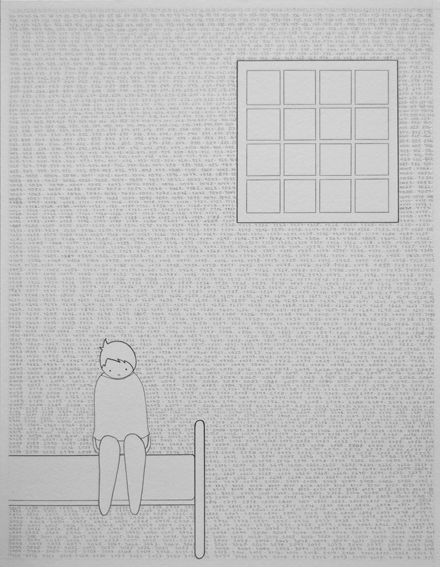Transcribed from her artist talk July 20th 2016
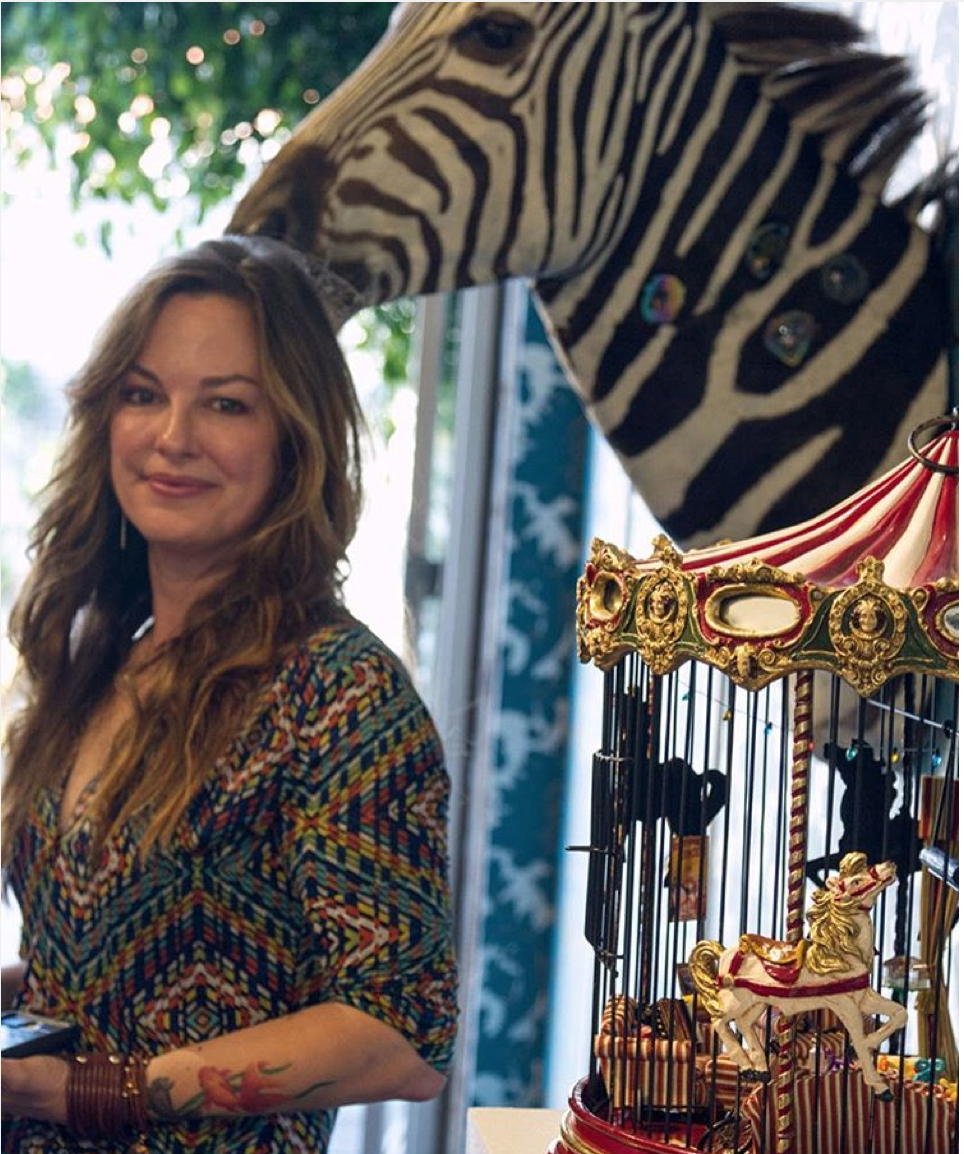
Hi, thank you all for coming. I am sure some of you got caroused, so thank you. Taxidermy has been around for hundreds of thousands of years in some form. People started tanning hides- sometimes just drying them out, sometimes with the urine of other animals- thousands of years ago to keep themselves warm. So in some sense, they were doing taxidermy, they were wearing the taxidermy
Back in the Victorian era, taxidermy started to create hybrid art; taxidermy 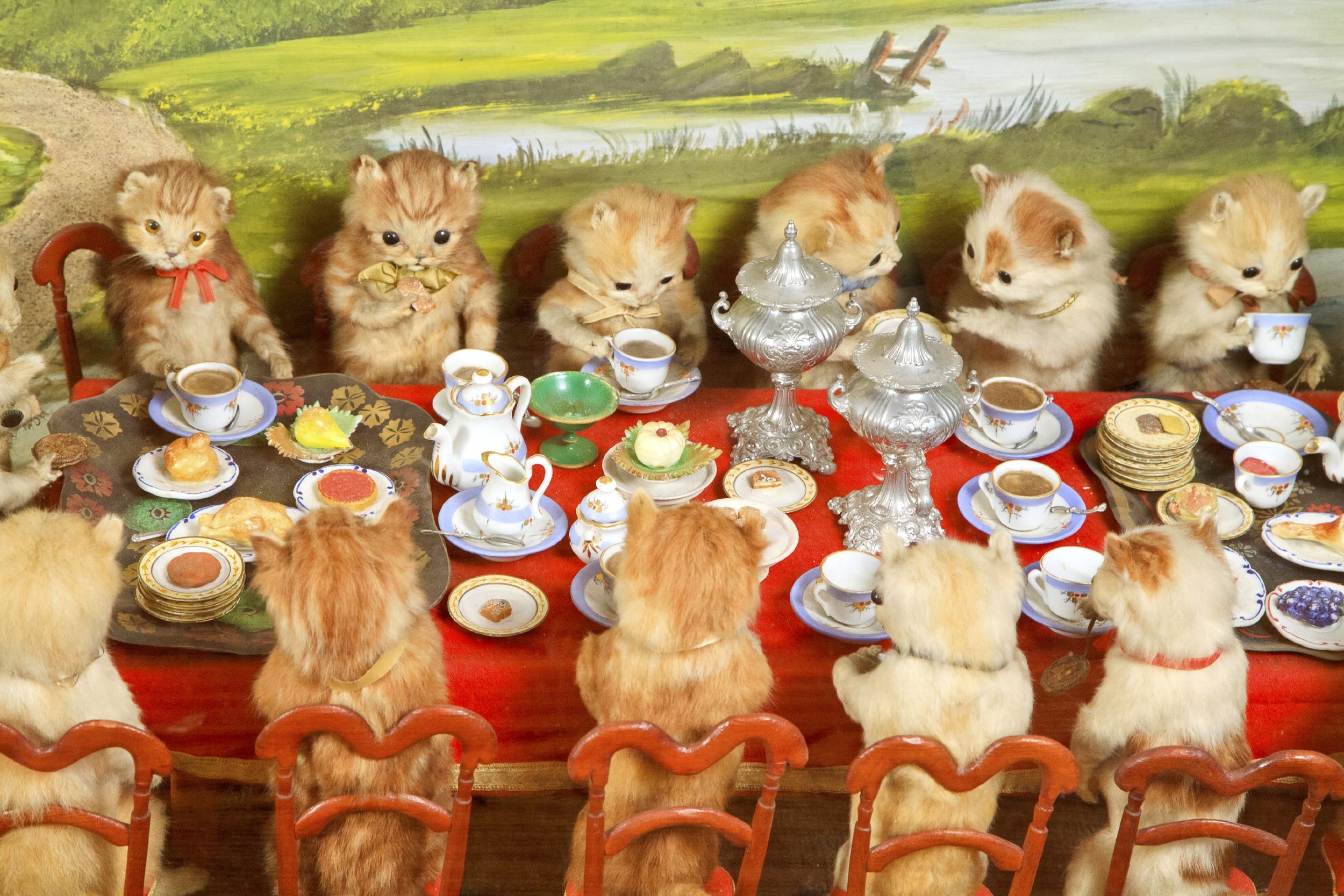 versus trophies, i.e. "I shot this lion in Africa." Walter Potter was a very famous Victorian taxidermist, you might have seen his work. He does the kitten weddings or a doll house full of doll house furniture and taxidermy mice having dinner together. They are sort of horrible and cute at the same time. Back during that era, taxidermist would build their own forms. That's where the term "stuffing" comes from. When you would see a piece that's finished, there would actually be some bones inside that were wrapped with twine and there would actually be cotton batting stuffed in there. The twine is called "Excelsior" it's kind of like a raffia, that you can make volume with, and that's what would be in here.
versus trophies, i.e. "I shot this lion in Africa." Walter Potter was a very famous Victorian taxidermist, you might have seen his work. He does the kitten weddings or a doll house full of doll house furniture and taxidermy mice having dinner together. They are sort of horrible and cute at the same time. Back during that era, taxidermist would build their own forms. That's where the term "stuffing" comes from. When you would see a piece that's finished, there would actually be some bones inside that were wrapped with twine and there would actually be cotton batting stuffed in there. The twine is called "Excelsior" it's kind of like a raffia, that you can make volume with, and that's what would be in here.

Today what's under there looks like this (form). Sport taxidermists, who do a lot, do 30 deer say from hunters, will actually buy the mold that this was poured into. Because I don't do enough to warrant that, I just buy these. There are two big taxidermy companies in America and you can buy these forms. I measure a hide that I have which is basically just leather. When I get a hide it is leather on one side, and hair on the other. I measure the hide, I buy a form to fit and I can also alter the form. So like this guy, when he started all of his legs were straight like this and I wanted him to be running. So you can see here there is re-bar that runs up through the leg. So I broke the foam, bent the re-bar and sculpted his knees back and today he looks like he's running. So you can alter forms to do different things. For example if I wanted to turn his head toward you, I would simply remove the head, turn it and then sculpt it in with some clay or this blue foam I'm using. so that he can have different positions. So when you look at taxidermy that's actually what you are looking at. This under here is this. And a lot of people, not surprisingly, think there is still part of the animal in there, but there's not anymore. There was at a point in taxidermy.
The process then is I use a hide paste, which is like a really thick Elmer's glue. I hydrate 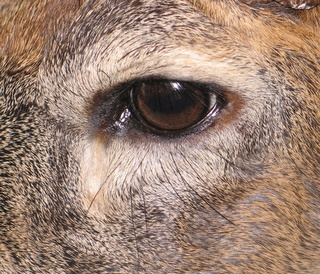 the hide so that it's wet and stretchable and then I sew the hide up over the form and then making the face look life like. When you see the nose is shiny, the eyes are shiny, and it looks alive this is all paint and epoxy, so it is different treatments that are put on there to make something dead look alive. The eyes are glass. A lot of the musculature you see, like the veins and the movement around the eyes is clay that I've molded and modeled it so there's actually some sculpting that's happening to make the face look real. So really when you see a piece of taxidermy the only thing that's real if the hide itself and then antlers or horns and even sometimes those are fake because some times they are not legal to have. So often times taxidermists will use an epoxy or resin mold to make them. So when you are looking at this taxidermy, that's what you are looking at.
the hide so that it's wet and stretchable and then I sew the hide up over the form and then making the face look life like. When you see the nose is shiny, the eyes are shiny, and it looks alive this is all paint and epoxy, so it is different treatments that are put on there to make something dead look alive. The eyes are glass. A lot of the musculature you see, like the veins and the movement around the eyes is clay that I've molded and modeled it so there's actually some sculpting that's happening to make the face look real. So really when you see a piece of taxidermy the only thing that's real if the hide itself and then antlers or horns and even sometimes those are fake because some times they are not legal to have. So often times taxidermists will use an epoxy or resin mold to make them. So when you are looking at this taxidermy, that's what you are looking at.
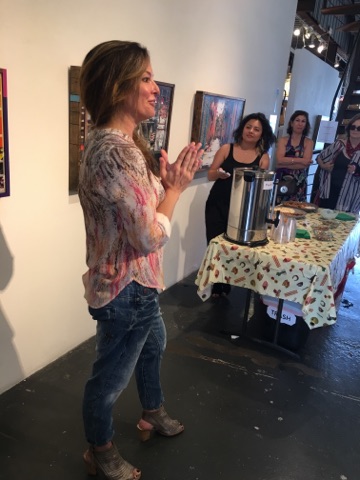 Going back to Walter Potter in the Victorian era who did like the kitten weddings- there's been a movement with taxidermy in the last maybe ten or fifteen years in the US and across the world in London and Iceland- there are people who are doing what I'm doing and sort of making taxidermy strange and using it in art in some way whether it's individual pieces or whether it's full installations like this and most of us are women. It's funny, I'd say like eighty percent are women. So it's kind of a Feminization of a traditionally male genre. And very often the training for taxidermy was kind of a "good ol' boys" club. It was very hard for women to even get information about it and even sometimes the "good ol' boys" wouldn't give the other "good ol' boys" the trade secrets. and it's kind of opened up recently which was lucky for me.
Going back to Walter Potter in the Victorian era who did like the kitten weddings- there's been a movement with taxidermy in the last maybe ten or fifteen years in the US and across the world in London and Iceland- there are people who are doing what I'm doing and sort of making taxidermy strange and using it in art in some way whether it's individual pieces or whether it's full installations like this and most of us are women. It's funny, I'd say like eighty percent are women. So it's kind of a Feminization of a traditionally male genre. And very often the training for taxidermy was kind of a "good ol' boys" club. It was very hard for women to even get information about it and even sometimes the "good ol' boys" wouldn't give the other "good ol' boys" the trade secrets. and it's kind of opened up recently which was lucky for me.
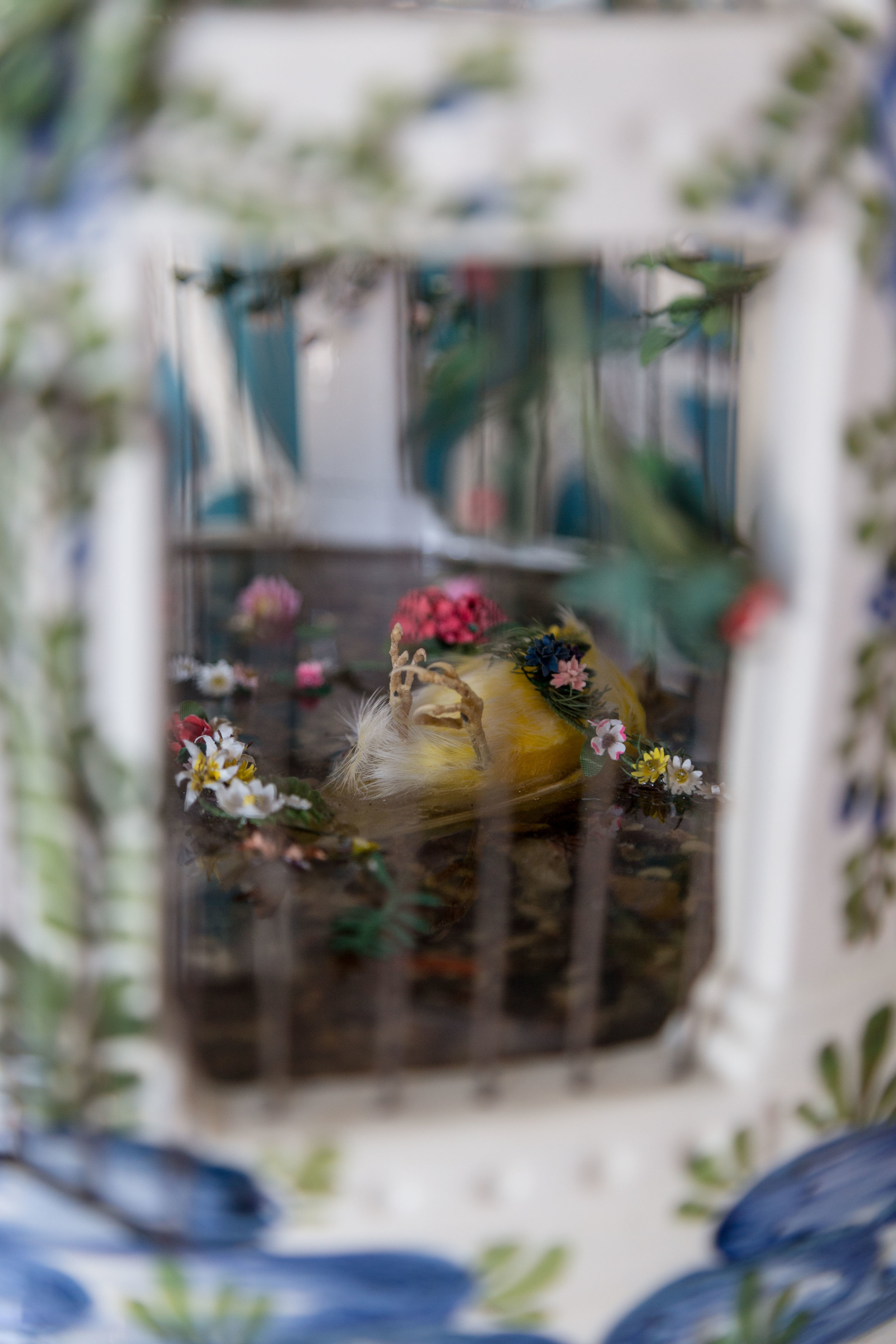 The way that all of this started was my background was actually in writing. I write mostly poetry and I also teach literature. For a brief time I owned an art gallery in downtown LA and I've always been interested in assemblage artists, like Keinholz and Ruaschenberg and their ilk. And so I started showing a lot of contemporary assemblage artists in my gallery. I had this idea of this idea of sort of visual poems, little narratives in cages and that's where the "Canary Suicides" started and I started showing them and making them and showing them in my gallery. The idea of the "Canary Suicides" is that we are all in our own cages literally or metaphorically and that we are miserable there and so we kill ourselves in some way even if we are not actually killing ourselves, we make our lives miserable. The canaries are embodying this, literally. They've killed themselves in their cages and they always leave a note of some kind, they always have money hidden somewhere, and because they are hypocrites like us, they also have a pet that's in some kind of a cage they can't get out. They are kind of fun to look at and find the clues of what's going on and all of them you can figure out, kind of by
The way that all of this started was my background was actually in writing. I write mostly poetry and I also teach literature. For a brief time I owned an art gallery in downtown LA and I've always been interested in assemblage artists, like Keinholz and Ruaschenberg and their ilk. And so I started showing a lot of contemporary assemblage artists in my gallery. I had this idea of this idea of sort of visual poems, little narratives in cages and that's where the "Canary Suicides" started and I started showing them and making them and showing them in my gallery. The idea of the "Canary Suicides" is that we are all in our own cages literally or metaphorically and that we are miserable there and so we kill ourselves in some way even if we are not actually killing ourselves, we make our lives miserable. The canaries are embodying this, literally. They've killed themselves in their cages and they always leave a note of some kind, they always have money hidden somewhere, and because they are hypocrites like us, they also have a pet that's in some kind of a cage they can't get out. They are kind of fun to look at and find the clues of what's going on and all of them you can figure out, kind of by
title and what you see. When I had the idea for these, I was actually having a taxidermist do the birds for me, and we found a couple of breeders in the US who would save birds for us when they died and lest anyone imagine that we are choking the little birds to death, a live canary sells for around the $300 and the dead ones I get for about $5. So they have absolutely no link to me killing the canaries. I had a taxidermist who was doing them for me and I kind of wanted to learn and be more

authentic in the process and do them myself. So I sort of blithely signed up for a six week taxidermy school program in Montana. I lived in a one room cabin and went to this school eight hours a day for six weeks with a bunch of red-neck dudes which they actually ended up being tremendously helpful and are all still my friends, but they were sort of wondering what I was doing there. They found out.
So at taxidermy school you learn to do not just birds but all of the animals. So I learned to do sort of soup to nuts and I found out that I actually liked doing the other animals as well. I started having ideas for sort of exploding out of the canary suicides into other dioramas. I started doing my first deer which showed in a couple of other galleries. There's a deer here that's split in half and he's actually become a geode and pinata in one. From there I started doing whole room installations. So you basically have dioramas inside dioramas inside dioramas. I am also very fascinated by geodes so you'll notice recurring through out here, there are geodes or references to geodes

I also like the idea of predator and prey and kind of what, what we think our relationship is also owner to pet, what we think our relationships are with animals. Domestic and otherwise, and what they really are. So kind of look for those relationships through out. You can especially see those in the collage that I do, which is prints or paintings that I have altered. So you see the prints, kind of look for what's going on, what appears to be going on with the pets at first and what happens when you look closer. There's a little lion that recurs throughout, who could be a guardian or could be stalking you kind of have to figure that out.
What inspired this particular installation?
I like the idea of animals entering domestic spaces. Asking us to look closer and to think about our relationship with the natural world. Its a room, might be a teenagers room that you would normally walk into and expect to see maybe some board games and hair brush set. But you would expect to see a deer hanging from a canopy with bat wings or an open geode pinata. which is a very adult pinata by the way he's got surprises inside of him. I like the idea of animals in domestic spaces in a different way, rather than just the idea of pet because it asks us to think about how we anthropomorphize animals and what they might 
Walk around take a look, the zebra installation is not for sale because it is illegal to sell zebras in the state of California even though he is about 60 years old. The zebra is called "Look Closer" which is also a line, do you remember the movie "American Beauty" with Kevin Spacey and there are the roses through out? The Zebra is called look closer and if you look at the bird cage " I never promised you (rose garden)" which is he killed himself in his rose garden, his note says "look closer". So the idea is that its kind of a treasure hunt or a set of Russian stacking dolls, the closer you look the smaller it gets and the details are really important.
What is the correlation between the zebra and the room?
Just the idea of "look closer". Something interesting about zebras is that they are black with white stripes not the opposite. There have been some fetal studies of zebras lately that they are black when they are in utero and then they start getting white stripes. So even there you have to look closer.
They are many zebras with different stripes and they mean different things or are from different tribes?
Yes, and there's gang warfare
How about we all sort of walk in and then you can explain the narratives behind each of the pieces?

This one is a "Canary Suicide", it's called "How many in a Hearse?" referring to the idea of the clown car and the answer would be one and its this guys and he's got a clown nose. So this is kind of his green room where he prepares for the circus and he's got all of the thing that you think a clown would have in his room. He's got an accordion, a rubber chicken, full bar, pack of camel cigarettes-a couple put out. He's got a canary in a cage. He's got a dressing table that lights up and a lamp over the sofa that lights up, but its a little bright in here so you can't see. He's got what is called a giraffe unicycle, so he does the high up unicycle.
Where do you find stuff like that?
Some of it I make. I did not make that one. I have a woman named Nancy Gaily in Nebraska, who makes custom stuff like that for me because she is really good with tiny stuff. My eyes aren't that good. If you are ever interested in buying anything tiny, Google 1:12, and put in what you want miniature and you'll probably find it. If I were two inches tall, I could probably get arrested for my Google searches. Like I said, there's always a note. The note in this one is to the right of the sofa, and there's always money hidden somewhere. I won't tell you where the money is, so you'll have to look and see and there's always a pet.
Because this installation is called "I'm Game" with the obvious play on that wild animals are game, there are also board games through out. So in this one he has recently played "Operation" which I thought was kind of funny because it has the red clown nose.
This one I talked about already. It is called "Look Closer" and he's got these geodes that recur through out the installation and he's got these which are called "HO" scale miniatures they are for people who make model trains. So there are domestic scenes here, and again the lion could be stalking or protecting

This is called "The Tea Party" and these are two piglets. They are from a farm in the mid west, and they were just born and the mama rolled over on them. So they were not long for this world. Piglets when they are born are not cute roly poly, they are actually quite skinny because they haven't eaten anything yet. I saved their bacon, meaning the are freeze-dried, they are not traditional taxidermy. All of the piglet is still actually there, the volume of the body has been preserved but all of the moisture has been removed. That's one of the gruesome things I do on a daily basis. If you notice they both have guns pointed at the other one, sort of like our current tea party.
This guy is called "Cornucopia" with an enya for the "n" because he is sort of a cornucopia and sort of a pinata. He's got the geode recurring and he's kind of an adult pinata. He's got condoms and candy and happy pills and booze spilling out of him.
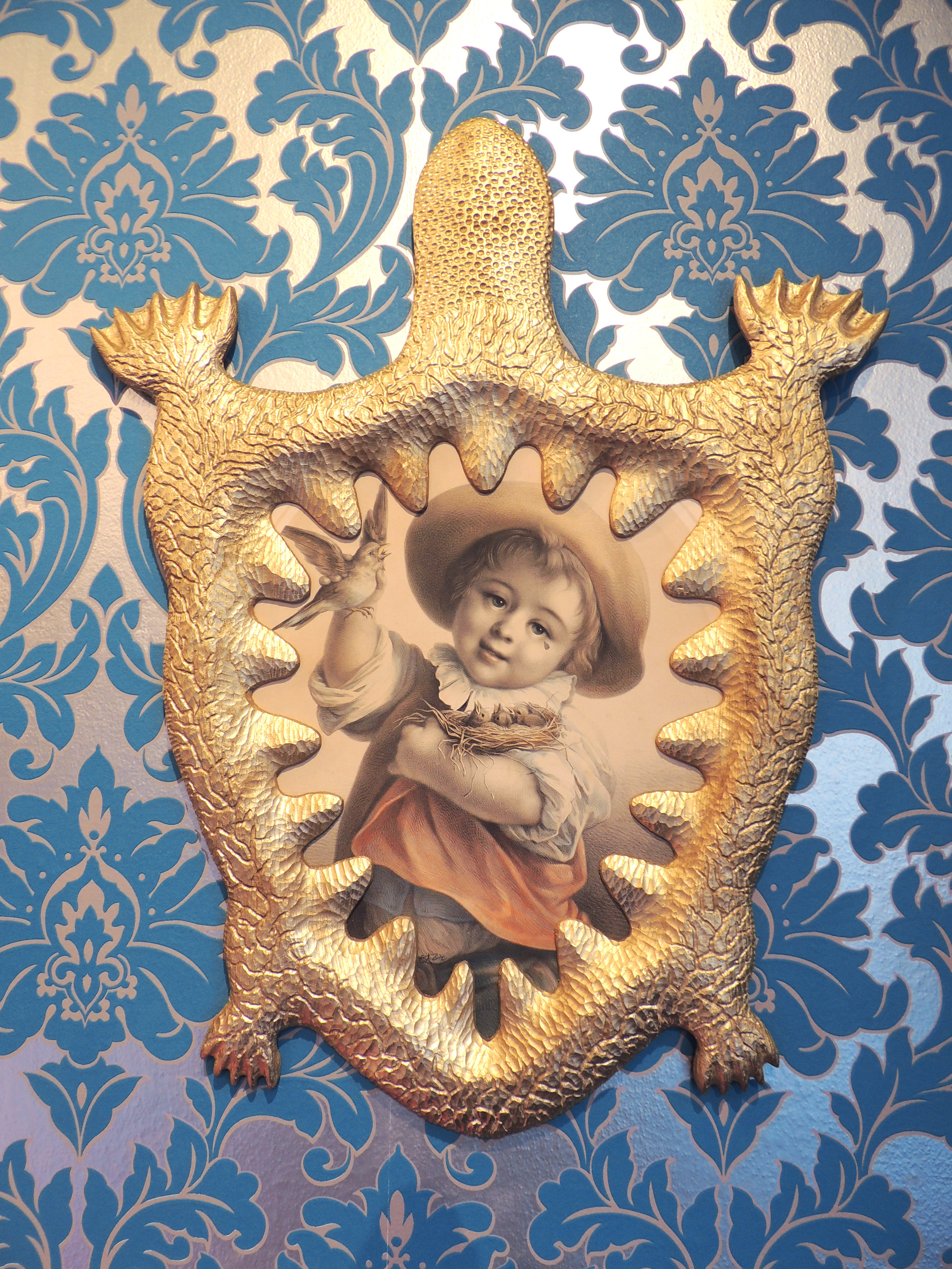 This one on the wall is called pour one out. The frame is actually made by a gentleman in Tacoma,Washington that I found at an estate sale. And he would take animal hides, this one I think a beaver, and trace them and make these frames out of the tracings on wood. They are just sort of weird, and I painted it gold. I found this piece with the boy with the bird in a vintage store here and I added a little gang tattoo on his face because he is pouring one out for his homies because I don't think the baby birds are excited about the way he is holding the mama bird.
This one on the wall is called pour one out. The frame is actually made by a gentleman in Tacoma,Washington that I found at an estate sale. And he would take animal hides, this one I think a beaver, and trace them and make these frames out of the tracings on wood. They are just sort of weird, and I painted it gold. I found this piece with the boy with the bird in a vintage store here and I added a little gang tattoo on his face because he is pouring one out for his homies because I don't think the baby birds are excited about the way he is holding the mama bird.
The piece here with the lamp and clock and flowers is called "Little Darling". This is again a recurring theme of the domestic pets not being super happy about their situation and not nearly as happy as the humans. This is a traditional lamp and she's holding a little mouse and she's got baby oil and pampers. She is going to pamper him and he's holding a pistol. On the flowers there's actually a real bee and that whole thing is one piece with the dresser and lamp and clock and the flowers and bee.
On the flower next to him is a piece called "Exacta" and exacta is a two horse race. So we've got a bunny with his bunny slipper that he is racing against his unbridled buddy and one of the things I wondered when I was splitting open the bunny slipper mouth to sew the bit into it I was wondering if it was taxidermy or not because it was sort of a bunny
This is the Game of Life, again the theme of I'm Game and I've altered it. Those of you who feel like it, if you get down next to it you can see that there are figures that have been added to the game of life. There's a lion kind of over looking everything and there are some people that have gotten out of the cars and are doing some pretty lewd activities.

The center place is called "If you touch me, you'll hear my voice" and the reason for that is that this bell, which I found on Esty, which is over the front end of the bed says that in Latin. So it is the idea that if you pull on the chain of the bell, you'll hear its voice, but I also that it was interesting that if we had access to each others dreams we would know each other very intimately very quickly. Somethings that you are not trying to hide and somethings that you are. The painting at the head of the bed is actually a celebration of Venus I believe. But I really liked the way it looked on the bed and if you notice there's a little green frog that has been collage into there and he is a little daemon, in the traditional daemon sense d-a-e-m-o-n. Who is sort of inciting all of the nonsense and sex and violence that goes on in here and he recurs in a lot of my collages. On the bed are just some vintage stuffed animals, I thought it was kind of funny to have a different kind of stuffed animal. The snake is a cobra and he is the only piece of taxidermy that is not a real animal. He's what we call a blank, in taxidermy so he is a plastic mold that has been airbrushed to look real. So there is nothing real about him. There are two flying squirrels, flying in and I am not sure if they are going to attack the snake or if they are fleeing from him, but they were a lot of fun to work with.

The deer at the center of the bed is a dik-dik and he's a male so he has a dik-dik dick. His wings are actual, real bat wings and they are actually that color. Most of us think of bats as being darker almost a black, but there are some South American bats and North American that are almost like a blonde color. I now have a bat in my studio without wings. Maybe I'll put some blue butterfly wings on him.
This one is called "Fantastic Garlands" and its the suicide of Ophelia. There's a line, I believe it's Gertrude when she first sees her, is reporting back that she has seen her in the water and she says like "she was wrapped in fantastic garlands" referring to the flowers that are everywhere around her. So Ophelia has done herself in here and she has lots of pets. The note in this one is hard to see but it's on the branch of the tree, I'll give you a hint.
This whole piece right here, other than the two little pieces that are seperate, this whole piece is call "The Narcissist". So you have the father duck standing on a mirror and kind of looking at the snake on his shoulder and looking at himself in the mirror while beneath him we have an alligator eating the three ducklings that he is supposed to be in charge of. Probably self-explanatory on that one.

I have a recurring motif of "Pinky" and "Blue Boy". Have any of you been to the Huntington and seen them at the opposite ends. So here they've met. We have "Pinky's" head and "Blue Boy's" body and we've got the daemon frog showing up
The two mice, this is a series I am doing called mice dreams. It's a little confusing because the canaries are meant to be dead and the mice are meant to be asleep, maybe I need to get a little pump that makes their sides rise and fall or something. The mice are having some pretty crazy dreams and if you notice they are sleeping on pillows that are "Pinky" and "Blue Boy". Thought it's been fun to have these three in the room together.
All of these pieces by the way are available separately, in clusters, or all together as a whole room

This one is called "I Never Promised You (rose garden)" that has the reference to "American Beauty". So the note in this one says "Look Closer" which is the name of the zebra and he has done himself in with garden sheers. Most people don't know that canaries are very flexible with their little feet so he's put garden sheers into himself. I'll let you find the money that's in there.
This piece is "Agni's Book". Agni is the bringer of fire like Prometheus is. He brings fire to the humans. So I imagined this boy as Agni in this dream where these events are coming from his book and he also has some help again from the daemon frog. There's all kinds of fire and mayhem and the canary has gotten lose finally.
This last piece is called "Colonel Mustard". I have some repair to do on the chandelier. It lights up but not tonight. So colonel mustard, in the library with the candlestick and again he has done it himself with his little foot. He has a gold fish, you can find the money and he has left a note which is over to the back left of the cage and it is written to Mrs. Peacock, who is flamboyantly out of his league.
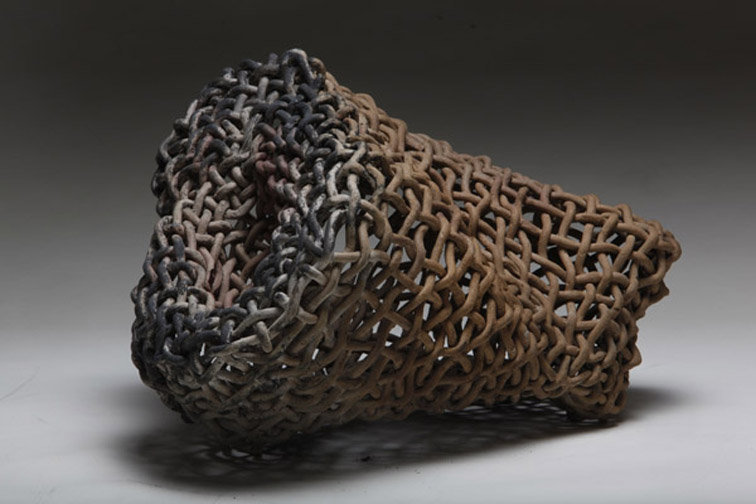
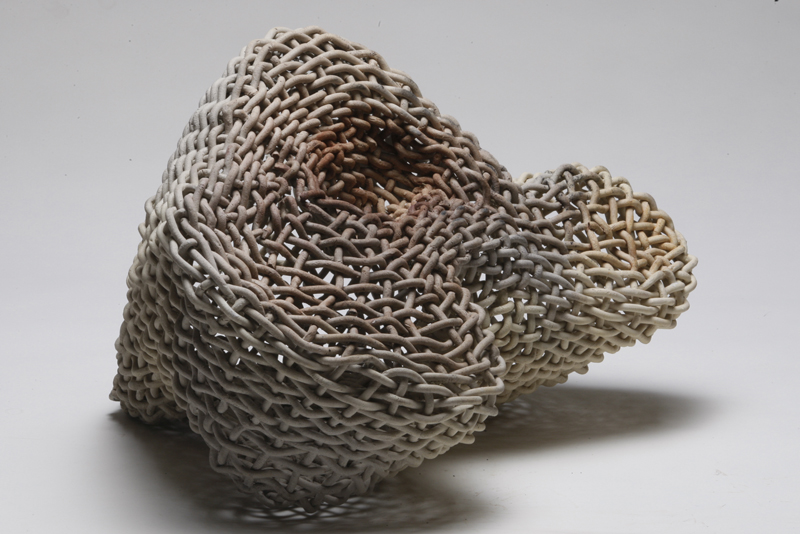
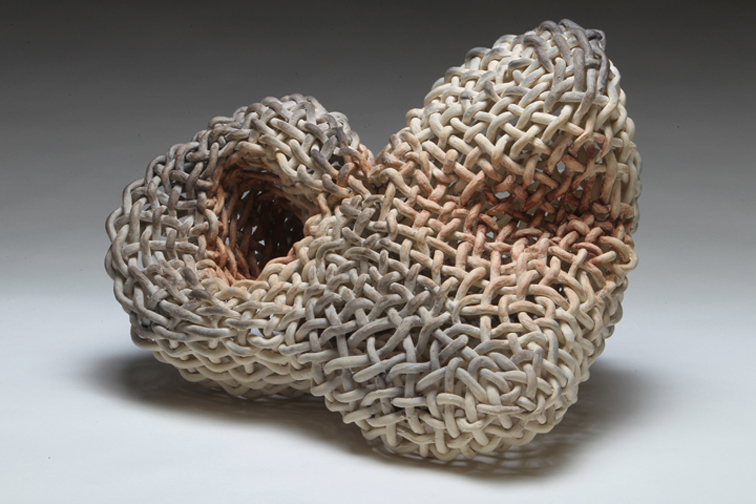
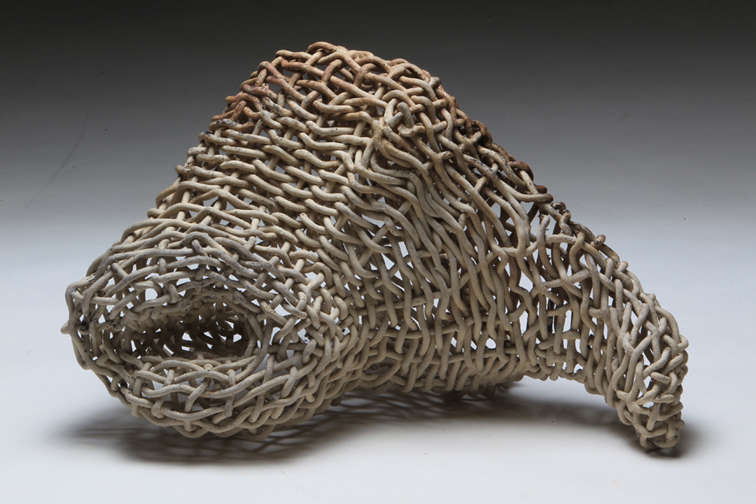

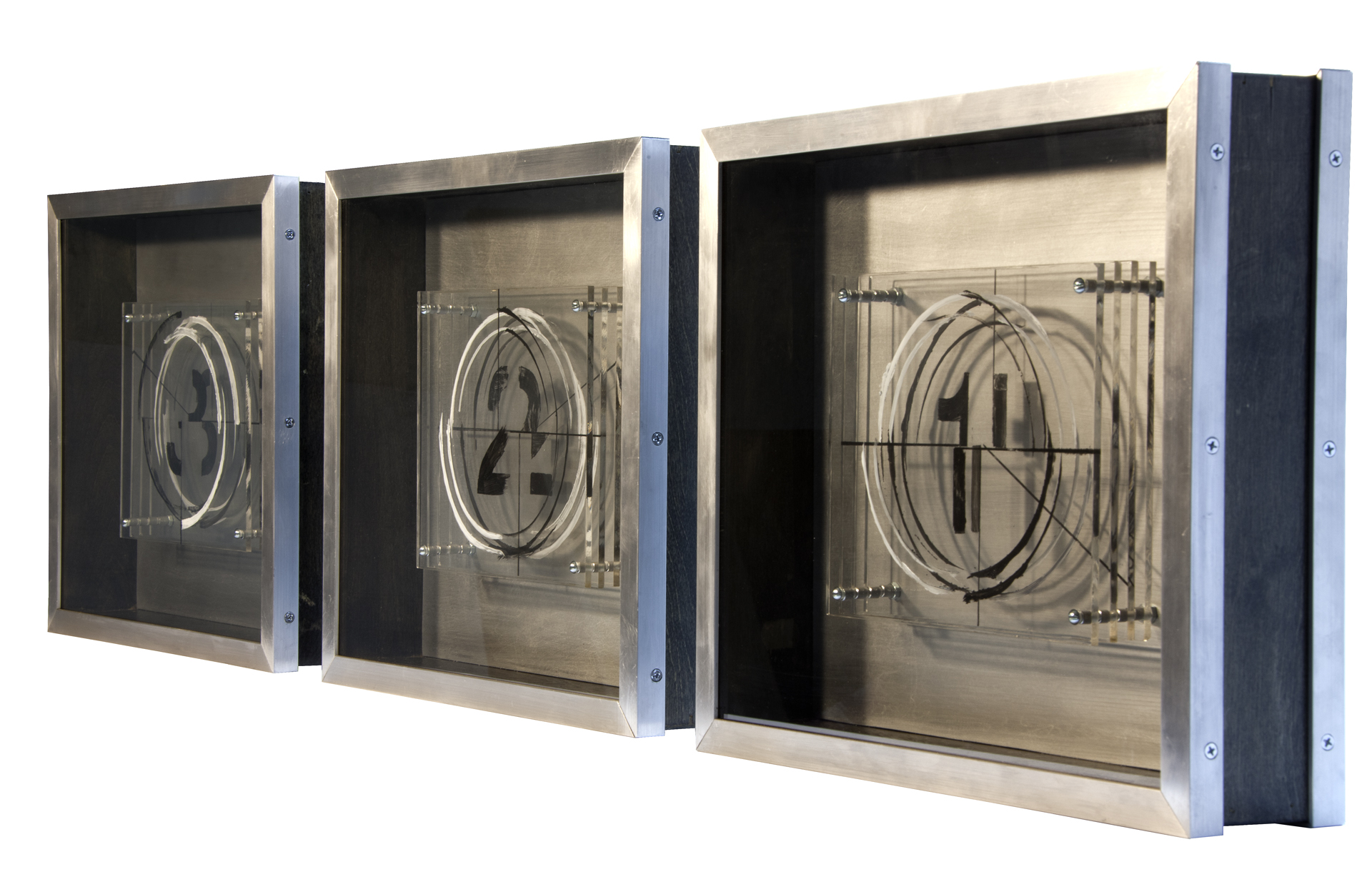


 by Editorial
by Editorial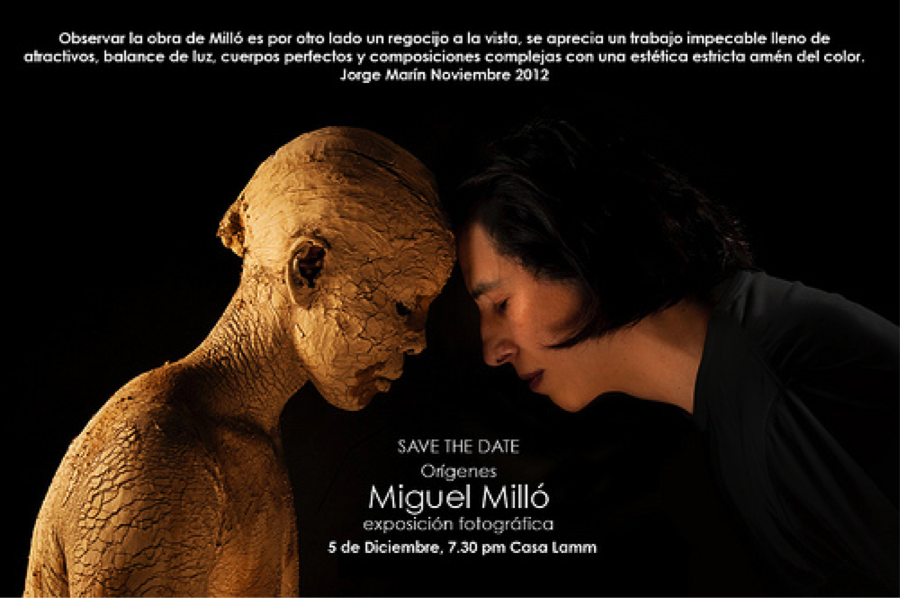

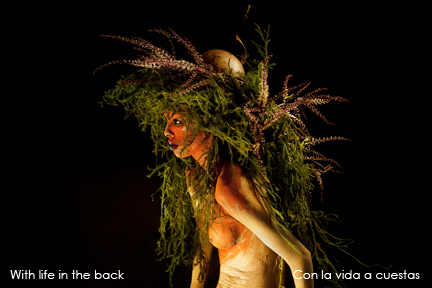 This artist creates works because he is born, but also because she says there's a voice inside that compels him to make him happy and obey that call, it feels good to be a subject of creativity, as well maintains an obsession with beauty. So declared, Miguel Millo, photographer by profession, referring to his latest exhibition entitled Origins.
This artist creates works because he is born, but also because she says there's a voice inside that compels him to make him happy and obey that call, it feels good to be a subject of creativity, as well maintains an obsession with beauty. So declared, Miguel Millo, photographer by profession, referring to his latest exhibition entitled Origins.
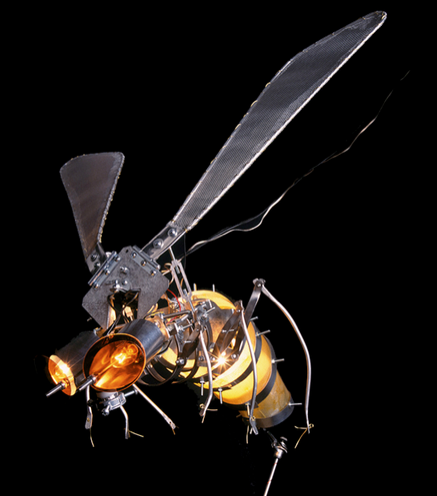
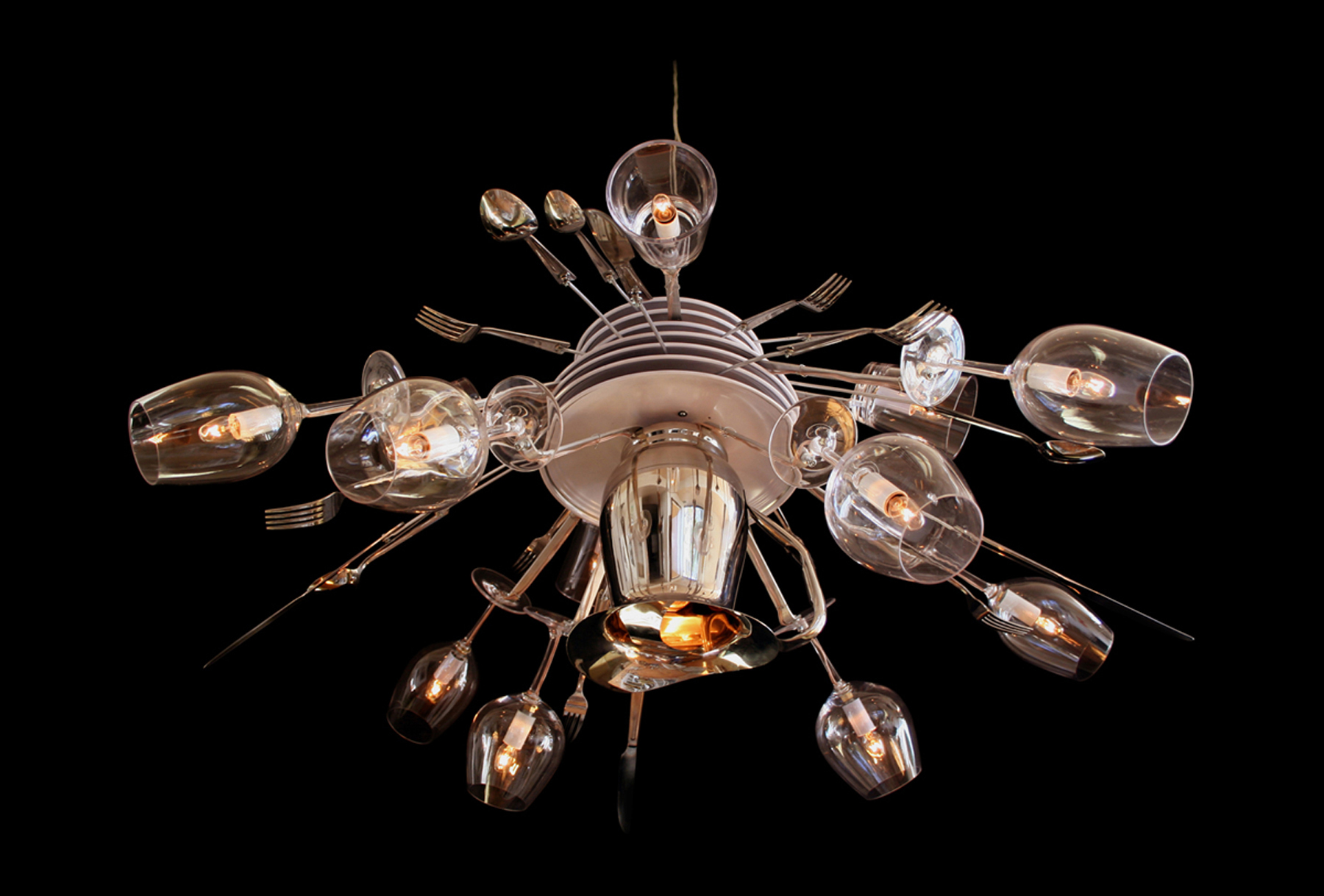
 This collection represents intangible things. Time, Clarity, Identity, Power, and Everything. I am examining them in fragments or basic components to create a tangible understanding.
This collection represents intangible things. Time, Clarity, Identity, Power, and Everything. I am examining them in fragments or basic components to create a tangible understanding.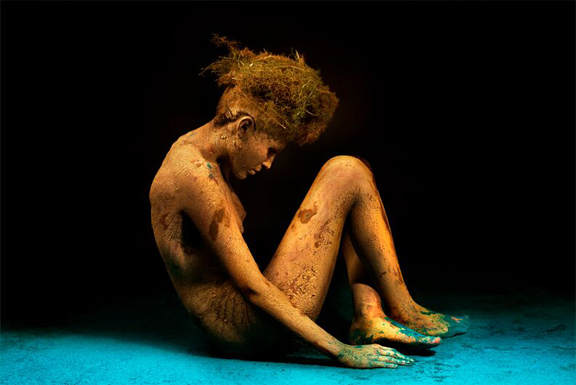 contemporary artist graphic design graduate from the Universidad Iberoamericana in Tijuana , Baja California, Mexico .
contemporary artist graphic design graduate from the Universidad Iberoamericana in Tijuana , Baja California, Mexico .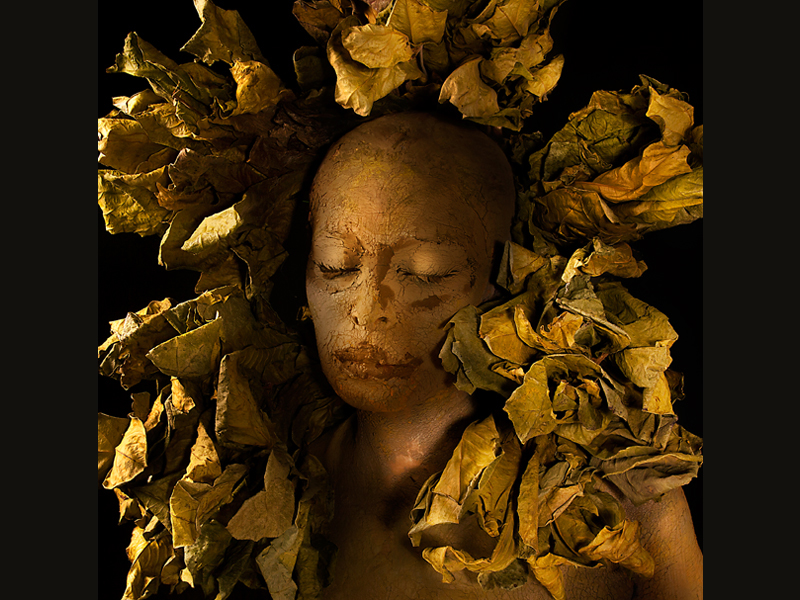 One can say that the naked bodies are blank canvases that the artist alters with clay and pigments, roots, leaves, flowers and fruits. This gives life to his final work, through the masterful handling of light and shadow that give volume and movement to the creation captured through his magic eye stopping time in a unique and unrepeatable moment.
One can say that the naked bodies are blank canvases that the artist alters with clay and pigments, roots, leaves, flowers and fruits. This gives life to his final work, through the masterful handling of light and shadow that give volume and movement to the creation captured through his magic eye stopping time in a unique and unrepeatable moment.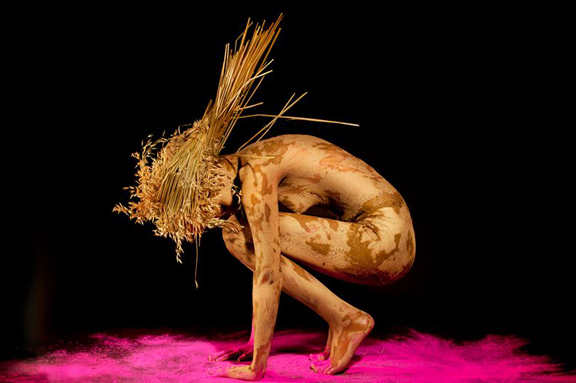
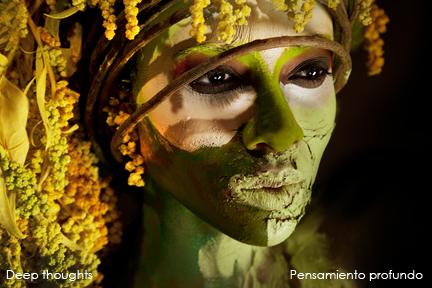
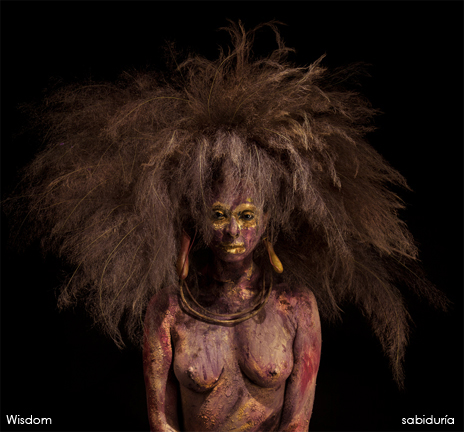 s”, makes me reunite with the essence of mankind, with the intimate moment in which human nature converges in a deep dialog with the entrails of earth.
s”, makes me reunite with the essence of mankind, with the intimate moment in which human nature converges in a deep dialog with the entrails of earth.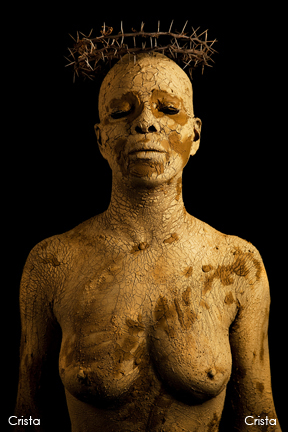 bserve and witness our own existence.
bserve and witness our own existence.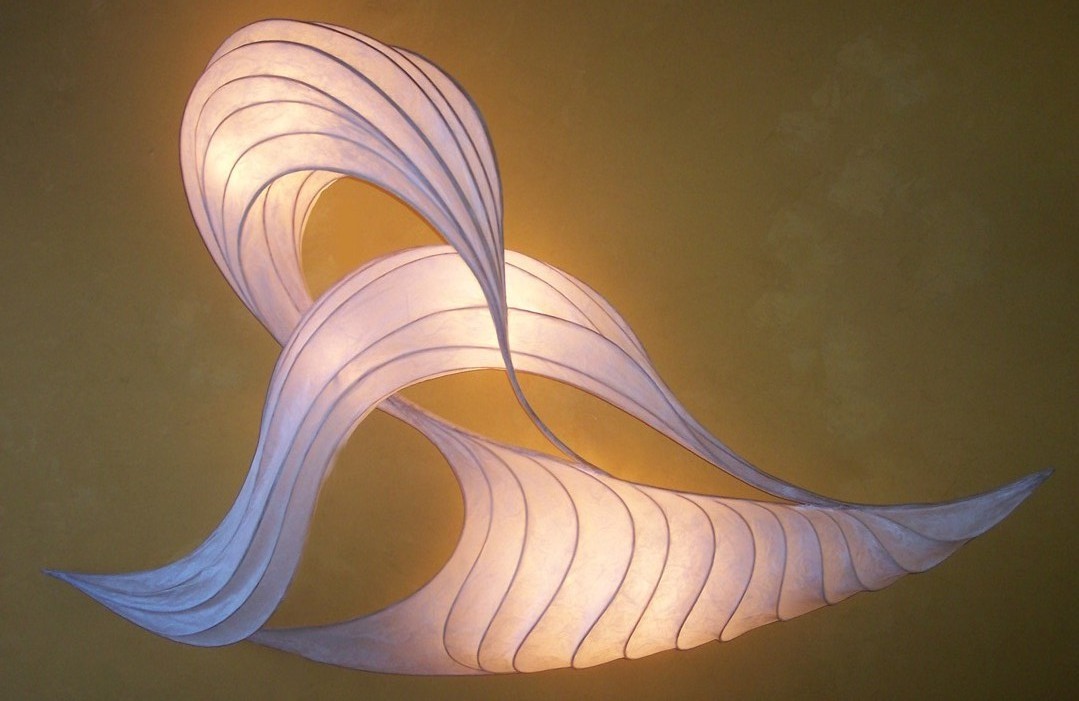
 as trained as an architect had developed this form of bend woods gluing them together using a hot melt glue gun and then covering them with paper that has been saturated with white glue the moment I saw one I was immediately attracted to it.
as trained as an architect had developed this form of bend woods gluing them together using a hot melt glue gun and then covering them with paper that has been saturated with white glue the moment I saw one I was immediately attracted to it.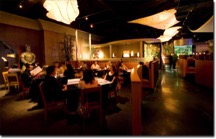 very interesting patterns.
very interesting patterns.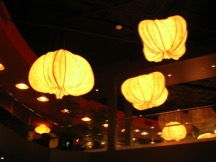 nature and surly I will have exhausted them and then I will move on to something else. And I found that to be actually the opposite that the more I apply myself to this art form the more ideas I have that I want to explore I have more ideas than I have time to apply myself to, but I think that is probably what defines an art form is there is always more to do more inspiration then one can possibly accomplish
nature and surly I will have exhausted them and then I will move on to something else. And I found that to be actually the opposite that the more I apply myself to this art form the more ideas I have that I want to explore I have more ideas than I have time to apply myself to, but I think that is probably what defines an art form is there is always more to do more inspiration then one can possibly accomplish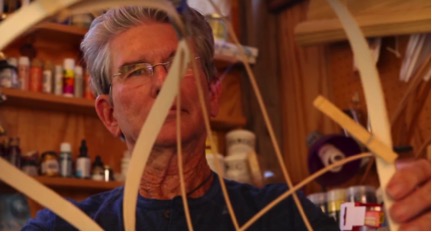
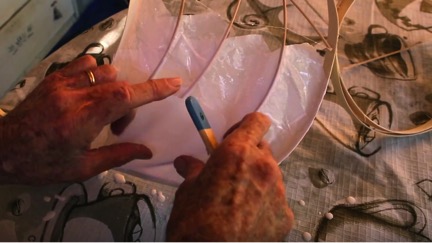
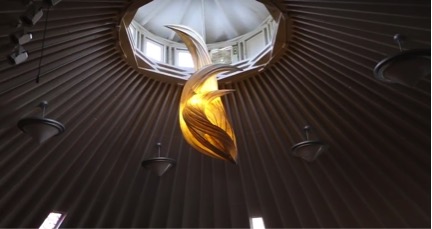
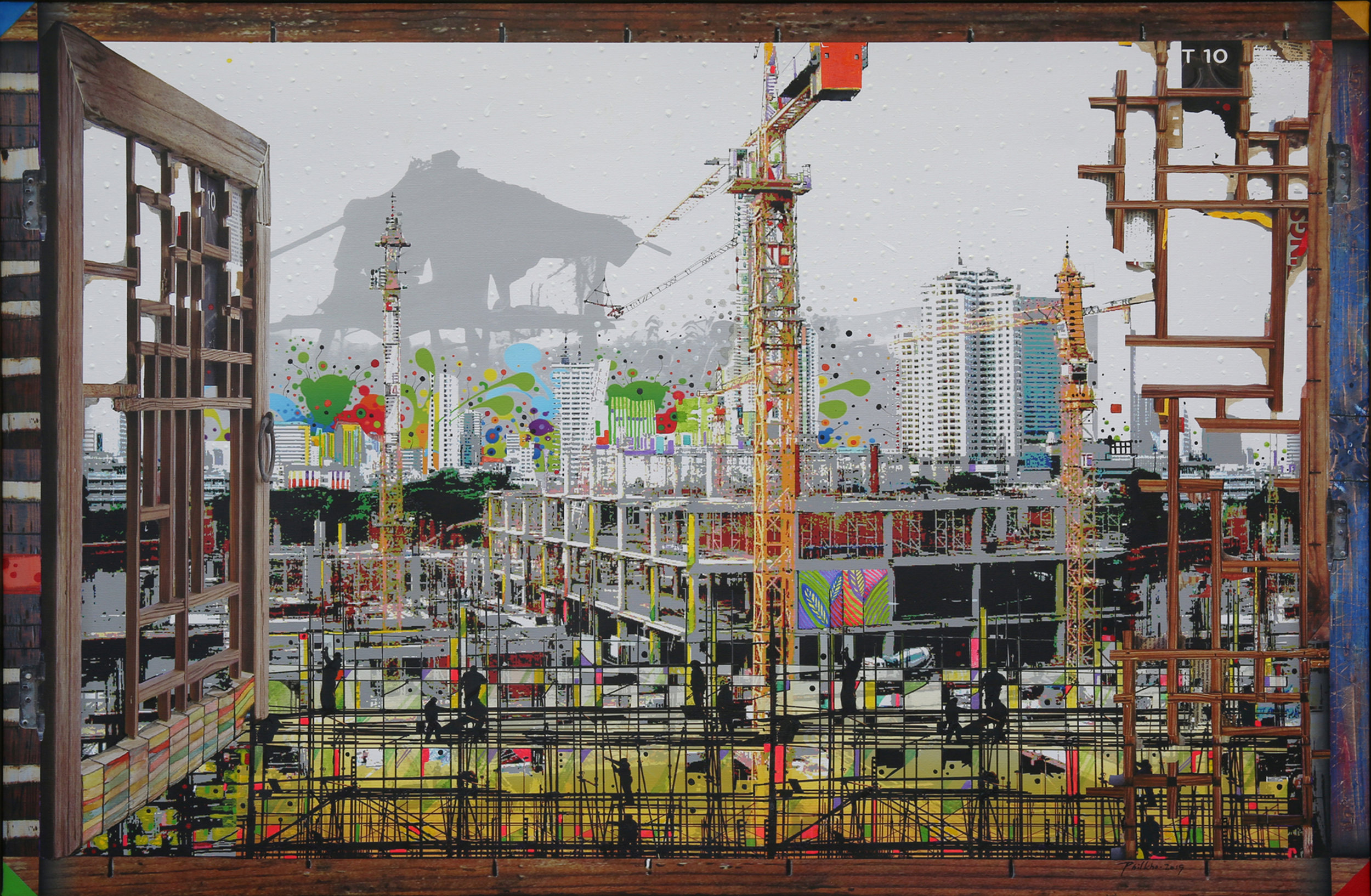
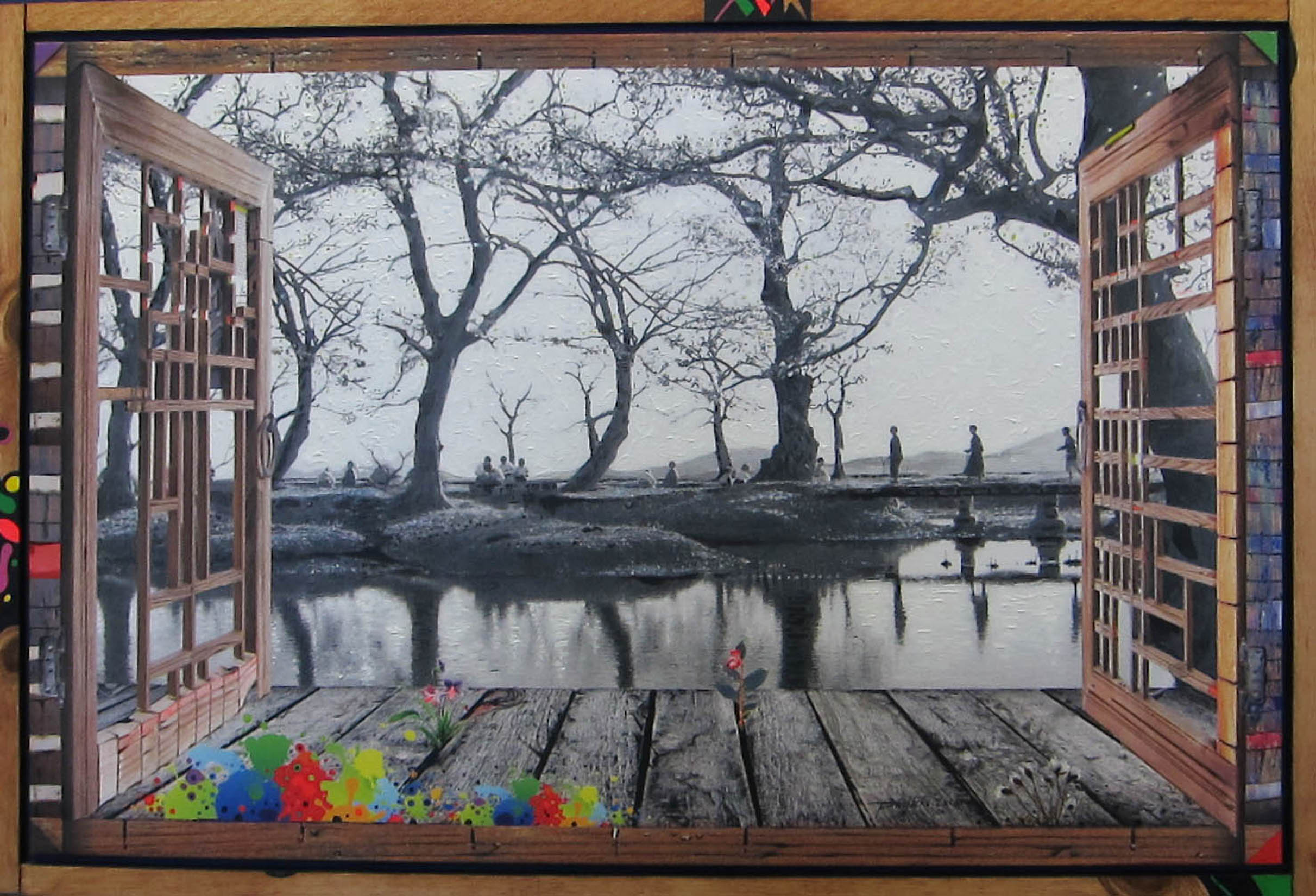
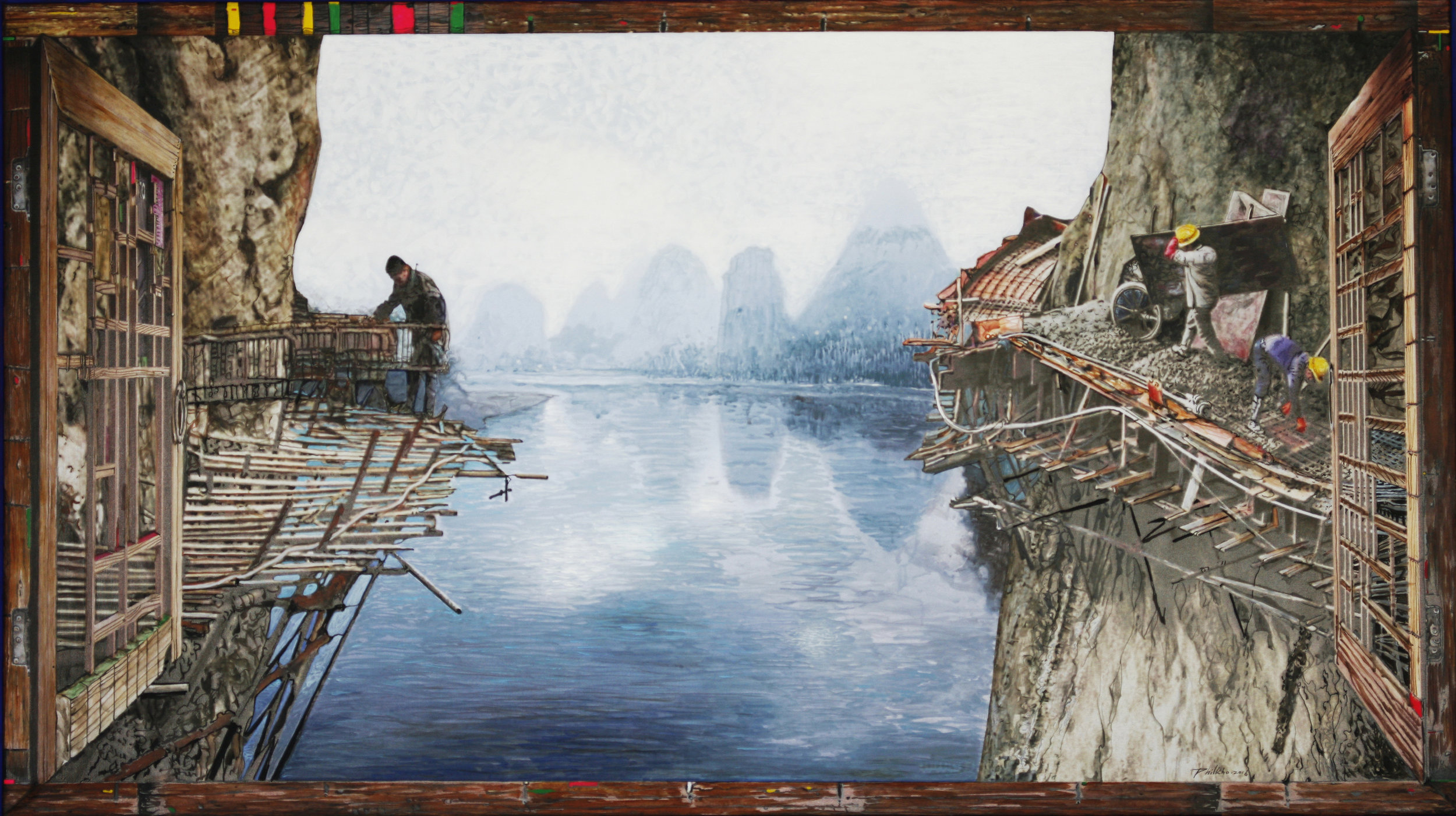

 versus trophies, i.e. "I shot this lion in Africa." Walter Potter was a very famous Victorian taxidermist, you might have seen his work. He does the kitten weddings or a doll house full of doll house furniture and taxidermy mice having dinner together. They are sort of horrible and cute at the same time. Back during that era, taxidermist would build their own forms. That's where the term "stuffing" comes from. When you would see a piece that's finished, there would actually be some bones inside that were wrapped with twine and there would actually be cotton batting stuffed in there. The twine is called "Excelsior" it's kind of like a raffia, that you can make volume with, and that's what would be in here.
versus trophies, i.e. "I shot this lion in Africa." Walter Potter was a very famous Victorian taxidermist, you might have seen his work. He does the kitten weddings or a doll house full of doll house furniture and taxidermy mice having dinner together. They are sort of horrible and cute at the same time. Back during that era, taxidermist would build their own forms. That's where the term "stuffing" comes from. When you would see a piece that's finished, there would actually be some bones inside that were wrapped with twine and there would actually be cotton batting stuffed in there. The twine is called "Excelsior" it's kind of like a raffia, that you can make volume with, and that's what would be in here.
 the hide so that it's wet and stretchable and then I sew the hide up over the form and then making the face look life like. When you see the nose is shiny, the eyes are shiny, and it looks alive this is all paint and epoxy, so it is different treatments that are put on there to make something dead look alive. The eyes are glass. A lot of the musculature you see, like the veins and the movement around the eyes is clay that I've molded and modeled it so there's actually some sculpting that's happening to make the face look real. So really when you see a piece of taxidermy the only thing that's real if the hide itself and then antlers or horns and even sometimes those are fake because some times they are not legal to have. So often times taxidermists will use an epoxy or resin mold to make them. So when you are looking at this taxidermy, that's what you are looking at.
the hide so that it's wet and stretchable and then I sew the hide up over the form and then making the face look life like. When you see the nose is shiny, the eyes are shiny, and it looks alive this is all paint and epoxy, so it is different treatments that are put on there to make something dead look alive. The eyes are glass. A lot of the musculature you see, like the veins and the movement around the eyes is clay that I've molded and modeled it so there's actually some sculpting that's happening to make the face look real. So really when you see a piece of taxidermy the only thing that's real if the hide itself and then antlers or horns and even sometimes those are fake because some times they are not legal to have. So often times taxidermists will use an epoxy or resin mold to make them. So when you are looking at this taxidermy, that's what you are looking at. Going back to Walter Potter in the Victorian era who did like the kitten weddings- there's been a movement with taxidermy in the last maybe ten or fifteen years in the US and across the world in London and Iceland- there are people who are doing what I'm doing and sort of making taxidermy strange and using it in art in some way whether it's individual pieces or whether it's full installations like this and most of us are women. It's funny, I'd say like eighty percent are women. So it's kind of a Feminization of a traditionally male genre. And very often the training for taxidermy was kind of a "good ol' boys" club. It was very hard for women to even get information about it and even sometimes the "good ol' boys" wouldn't give the other "good ol' boys" the trade secrets. and it's kind of opened up recently which was lucky for me.
Going back to Walter Potter in the Victorian era who did like the kitten weddings- there's been a movement with taxidermy in the last maybe ten or fifteen years in the US and across the world in London and Iceland- there are people who are doing what I'm doing and sort of making taxidermy strange and using it in art in some way whether it's individual pieces or whether it's full installations like this and most of us are women. It's funny, I'd say like eighty percent are women. So it's kind of a Feminization of a traditionally male genre. And very often the training for taxidermy was kind of a "good ol' boys" club. It was very hard for women to even get information about it and even sometimes the "good ol' boys" wouldn't give the other "good ol' boys" the trade secrets. and it's kind of opened up recently which was lucky for me. The way that all of this started was my background was actually in writing. I write mostly poetry and I also teach literature. For a brief time I owned an art gallery in downtown LA and I've always been interested in assemblage artists, like Keinholz and Ruaschenberg and their ilk. And so I started showing a lot of contemporary assemblage artists in my gallery. I had this idea of this idea of sort of visual poems, little narratives in cages and that's where the "Canary Suicides" started and I started showing them and making them and showing them in my gallery. The idea of the "Canary Suicides" is that we are all in our own cages literally or metaphorically and that we are miserable there and so we kill ourselves in some way even if we are not actually killing ourselves, we make our lives miserable. The canaries are embodying this, literally. They've killed themselves in their cages and they always leave a note of some kind, they always have money hidden somewhere, and because they are hypocrites like us, they also have a pet that's in some kind of a cage they can't get out. They are kind of fun to look at and find the clues of what's going on and all of them you can figure out, kind of by
The way that all of this started was my background was actually in writing. I write mostly poetry and I also teach literature. For a brief time I owned an art gallery in downtown LA and I've always been interested in assemblage artists, like Keinholz and Ruaschenberg and their ilk. And so I started showing a lot of contemporary assemblage artists in my gallery. I had this idea of this idea of sort of visual poems, little narratives in cages and that's where the "Canary Suicides" started and I started showing them and making them and showing them in my gallery. The idea of the "Canary Suicides" is that we are all in our own cages literally or metaphorically and that we are miserable there and so we kill ourselves in some way even if we are not actually killing ourselves, we make our lives miserable. The canaries are embodying this, literally. They've killed themselves in their cages and they always leave a note of some kind, they always have money hidden somewhere, and because they are hypocrites like us, they also have a pet that's in some kind of a cage they can't get out. They are kind of fun to look at and find the clues of what's going on and all of them you can figure out, kind of by




 This one on the wall is called pour one out. The frame is actually made by a gentleman in Tacoma,Washington that I found at an estate sale. And he would take animal hides, this one I think a beaver, and trace them and make these frames out of the tracings on wood. They are just sort of weird, and I painted it gold. I found this piece with the boy with the bird in a vintage store here and I added a little gang tattoo on his face because he is pouring one out for his homies because I don't think the baby birds are excited about the way he is holding the mama bird.
This one on the wall is called pour one out. The frame is actually made by a gentleman in Tacoma,Washington that I found at an estate sale. And he would take animal hides, this one I think a beaver, and trace them and make these frames out of the tracings on wood. They are just sort of weird, and I painted it gold. I found this piece with the boy with the bird in a vintage store here and I added a little gang tattoo on his face because he is pouring one out for his homies because I don't think the baby birds are excited about the way he is holding the mama bird.



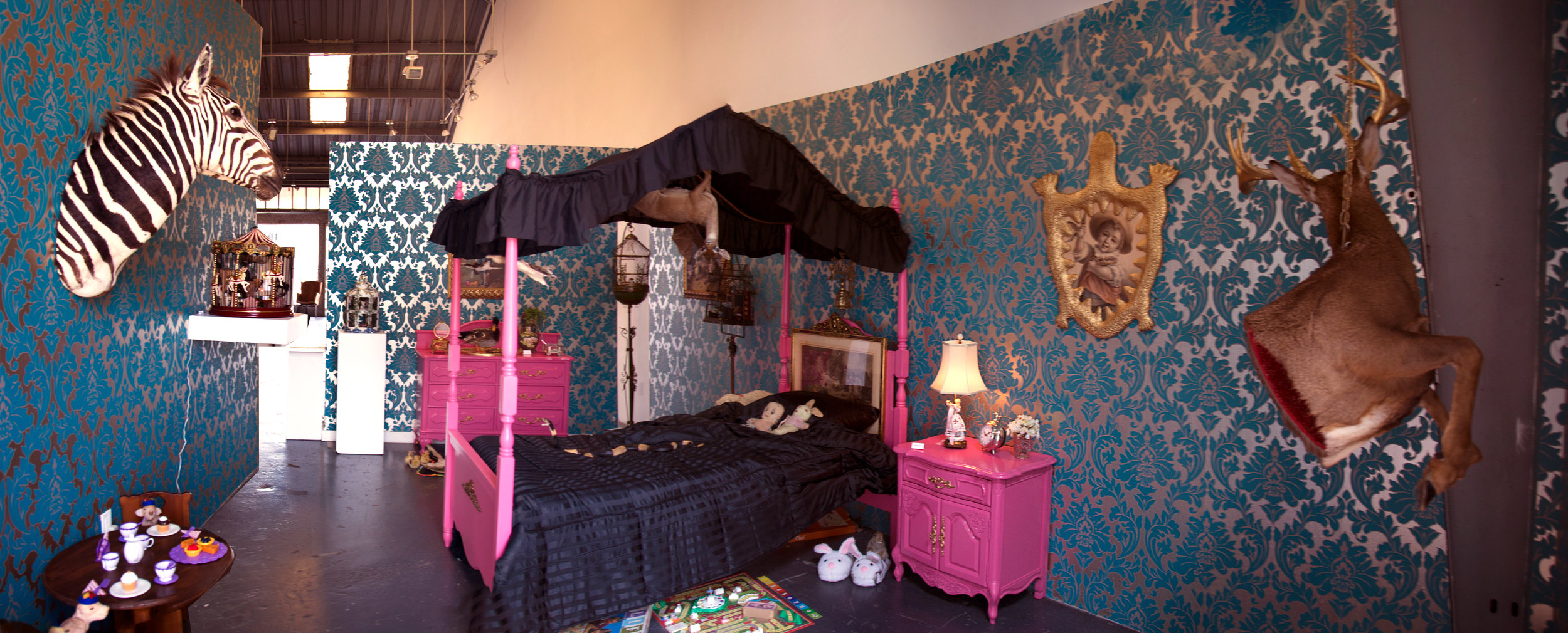 Catherine Coan is an artist, hybrid taxidermist, writer, and professor living in Los Angeles. She was a judge on the AMC TV series Immortalized.
Catherine Coan is an artist, hybrid taxidermist, writer, and professor living in Los Angeles. She was a judge on the AMC TV series Immortalized.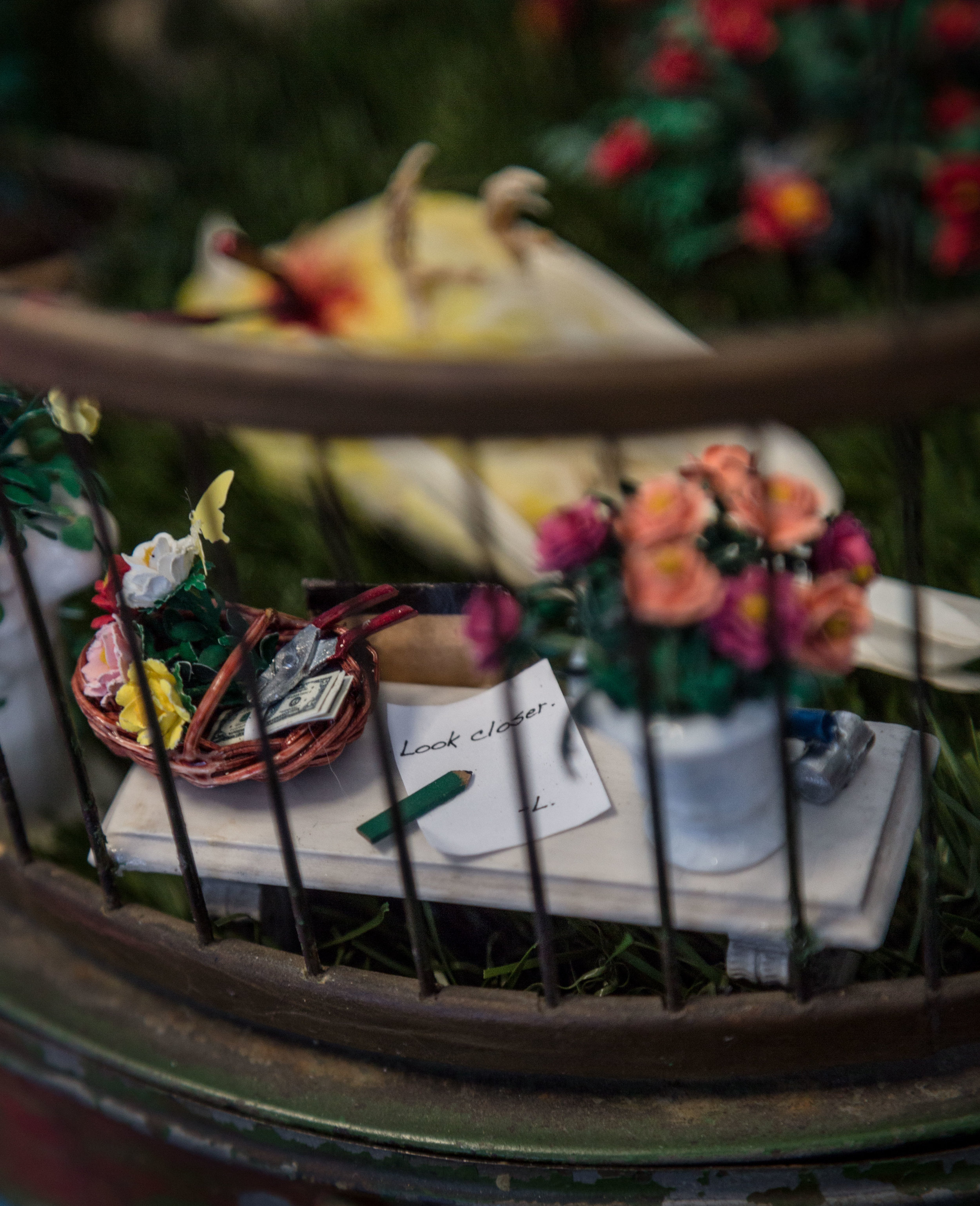
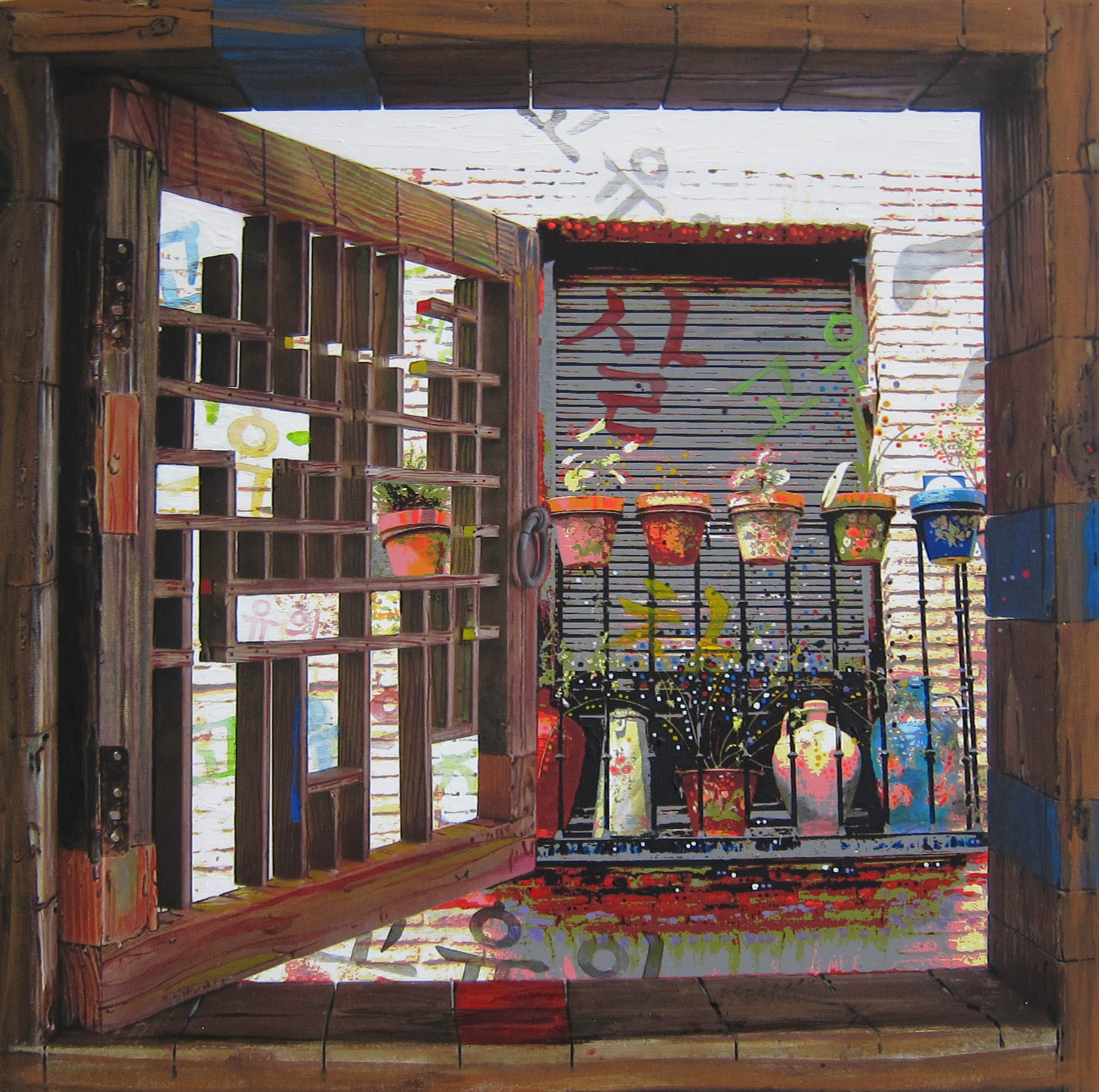
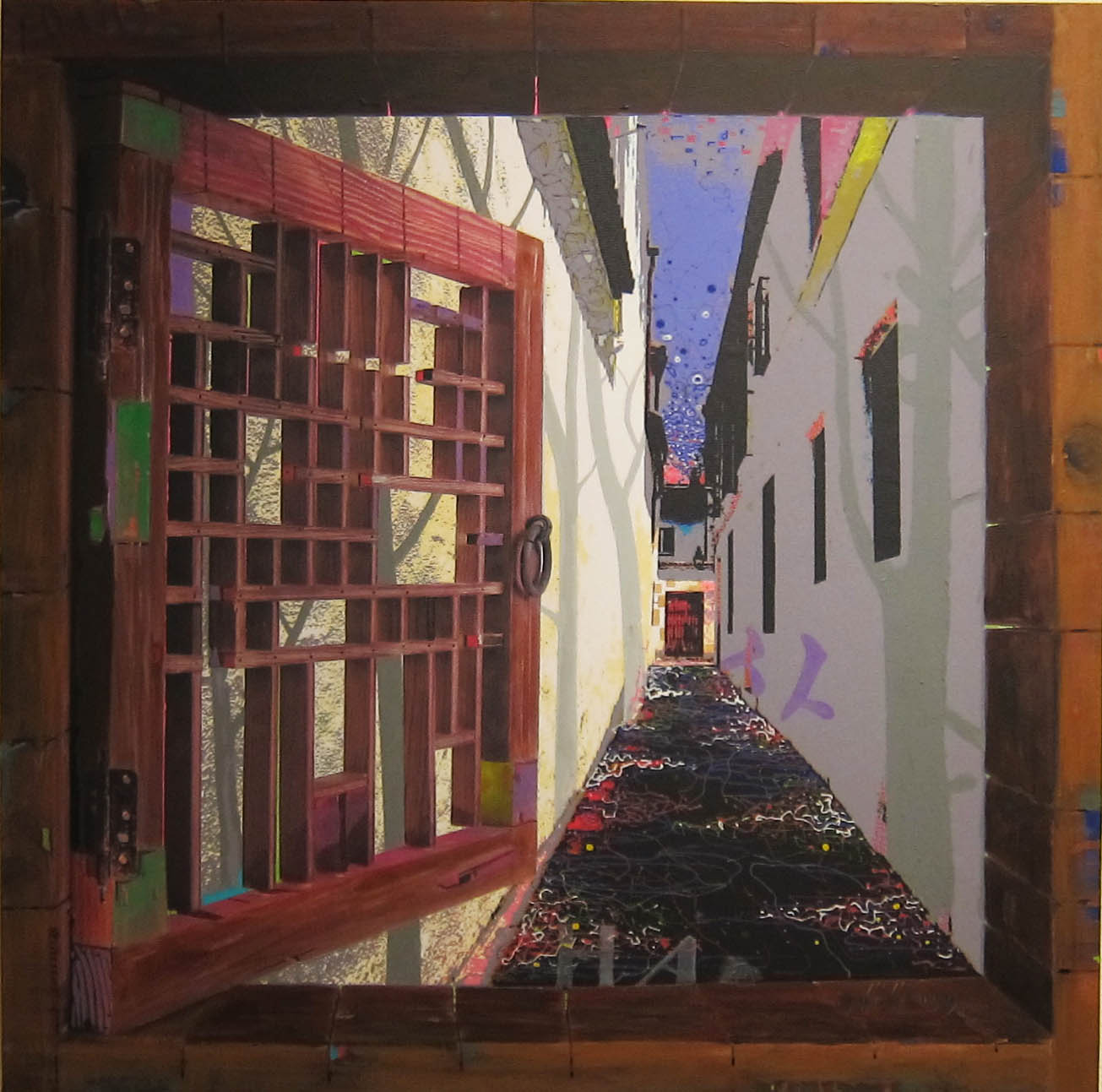 constructing the window itself out of wood and interjecting digital images on canvas, which he then paints over. This multi-layered technique lends itself to Phil’s greater message of embracing past, present and future.
constructing the window itself out of wood and interjecting digital images on canvas, which he then paints over. This multi-layered technique lends itself to Phil’s greater message of embracing past, present and future.
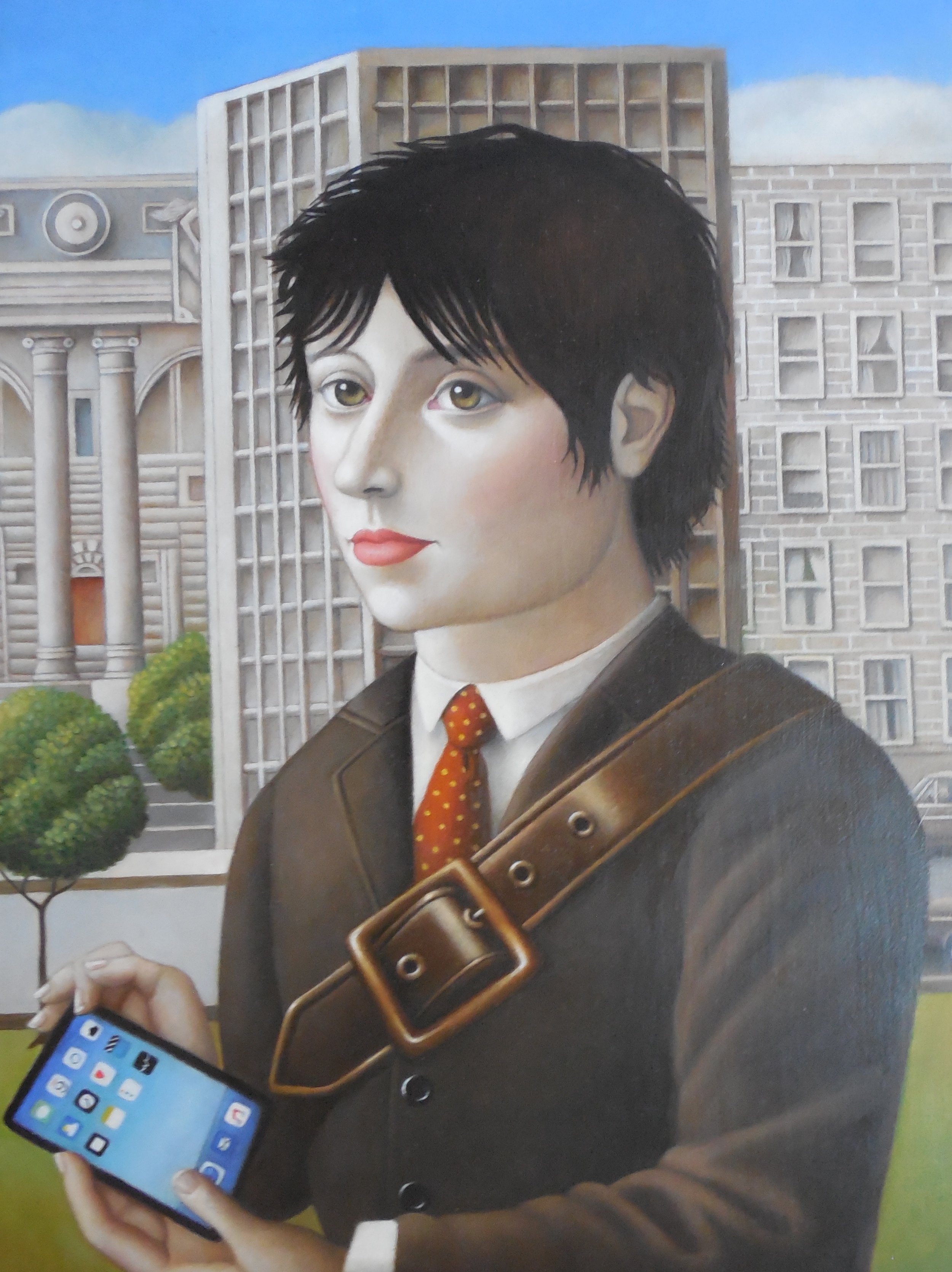
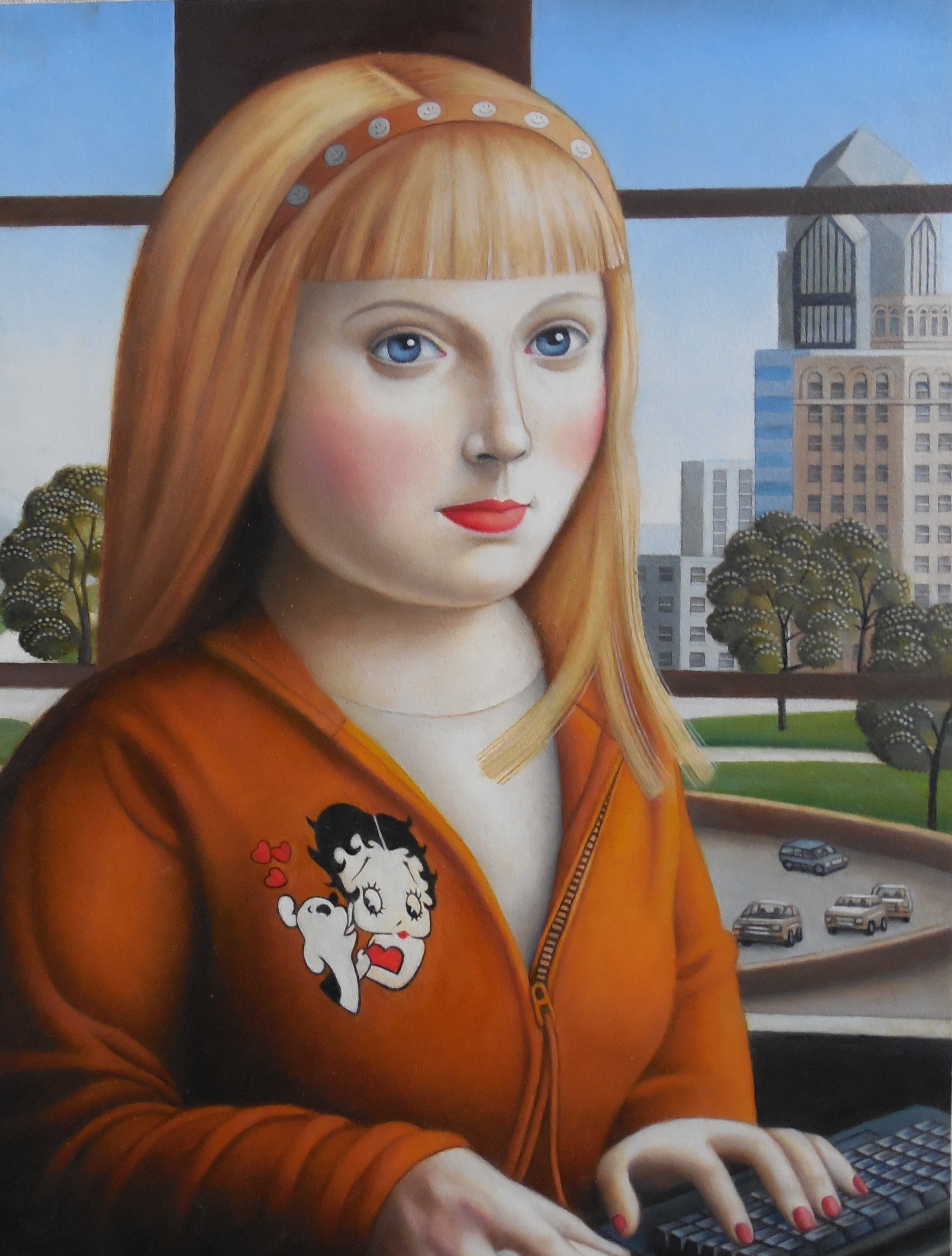
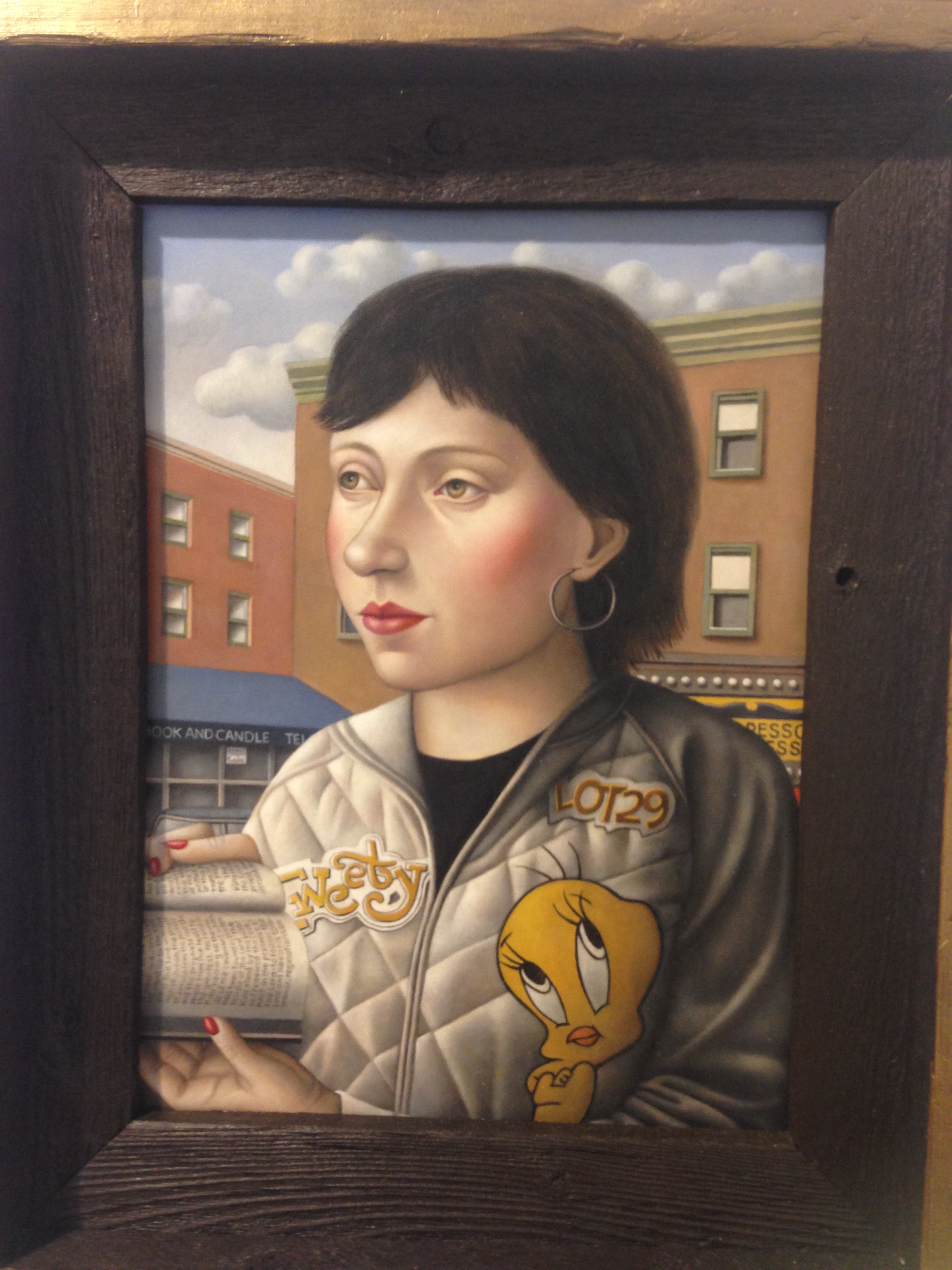
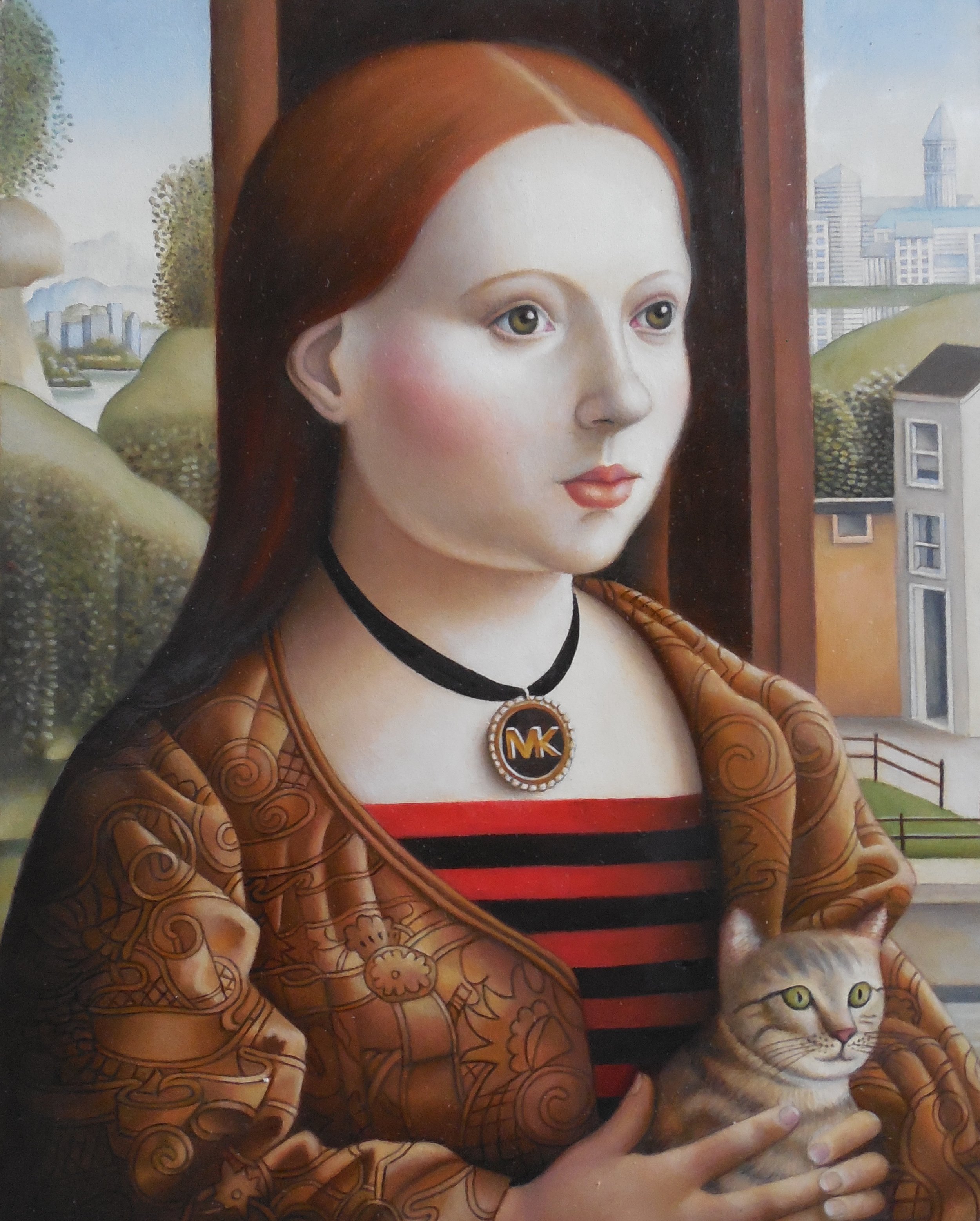
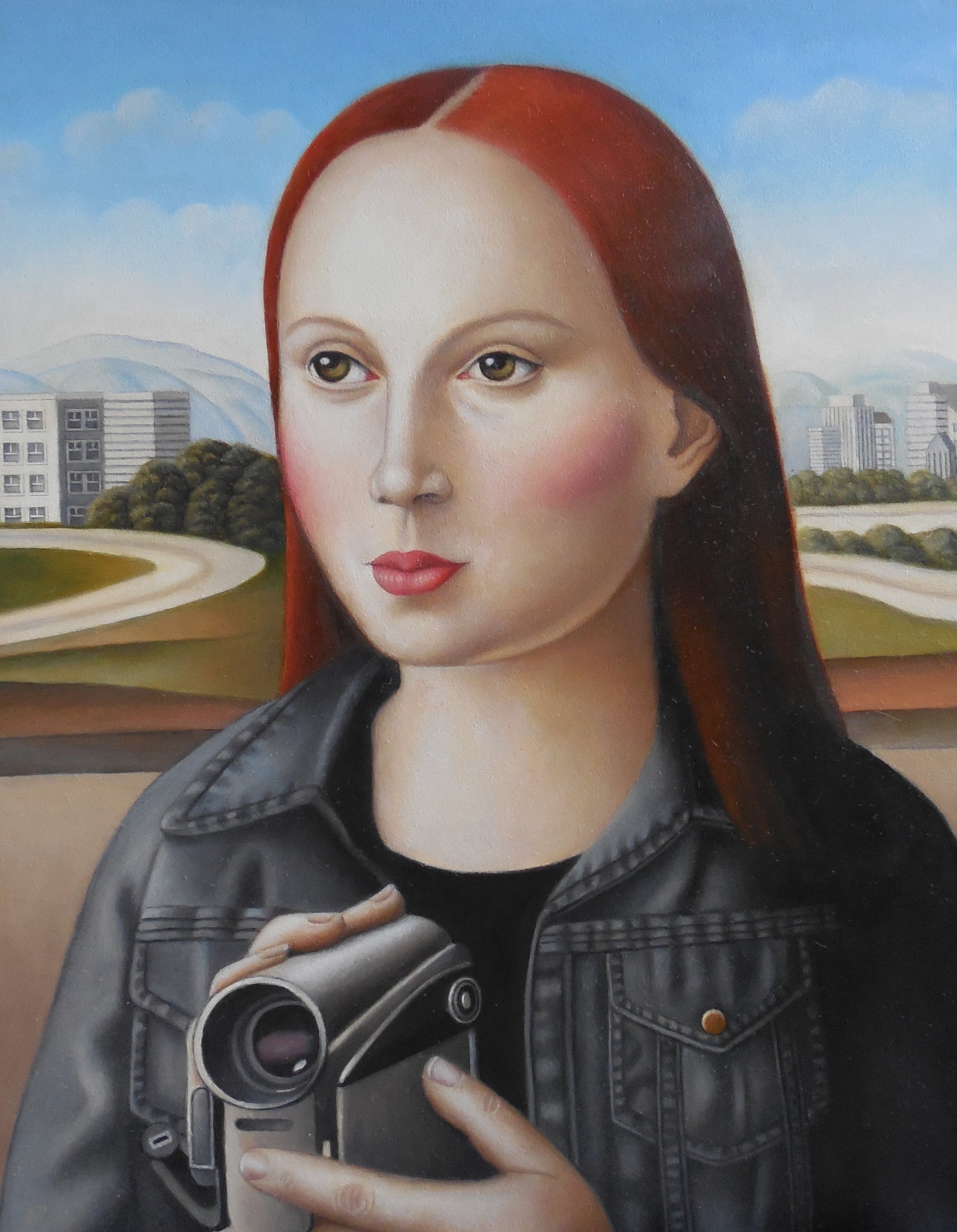
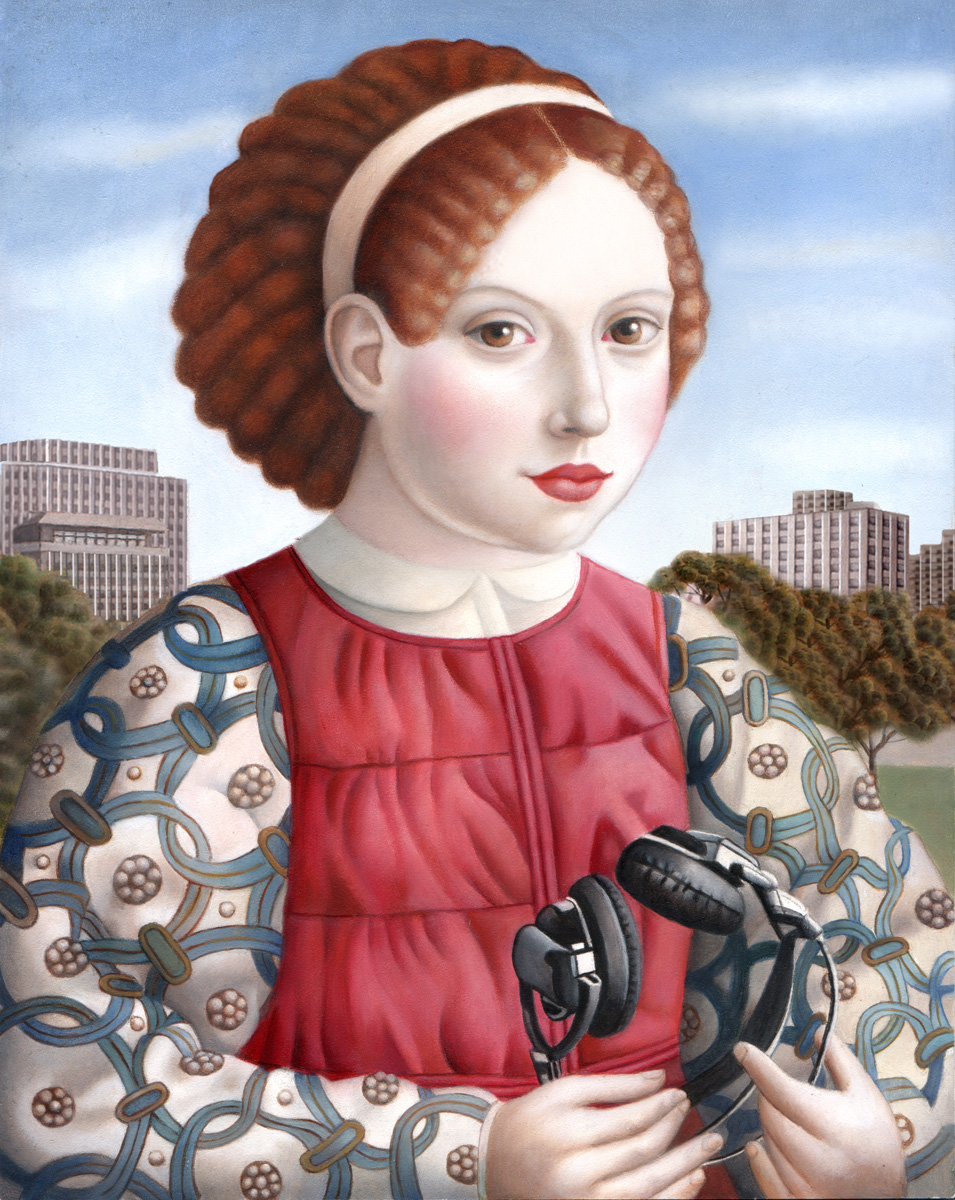
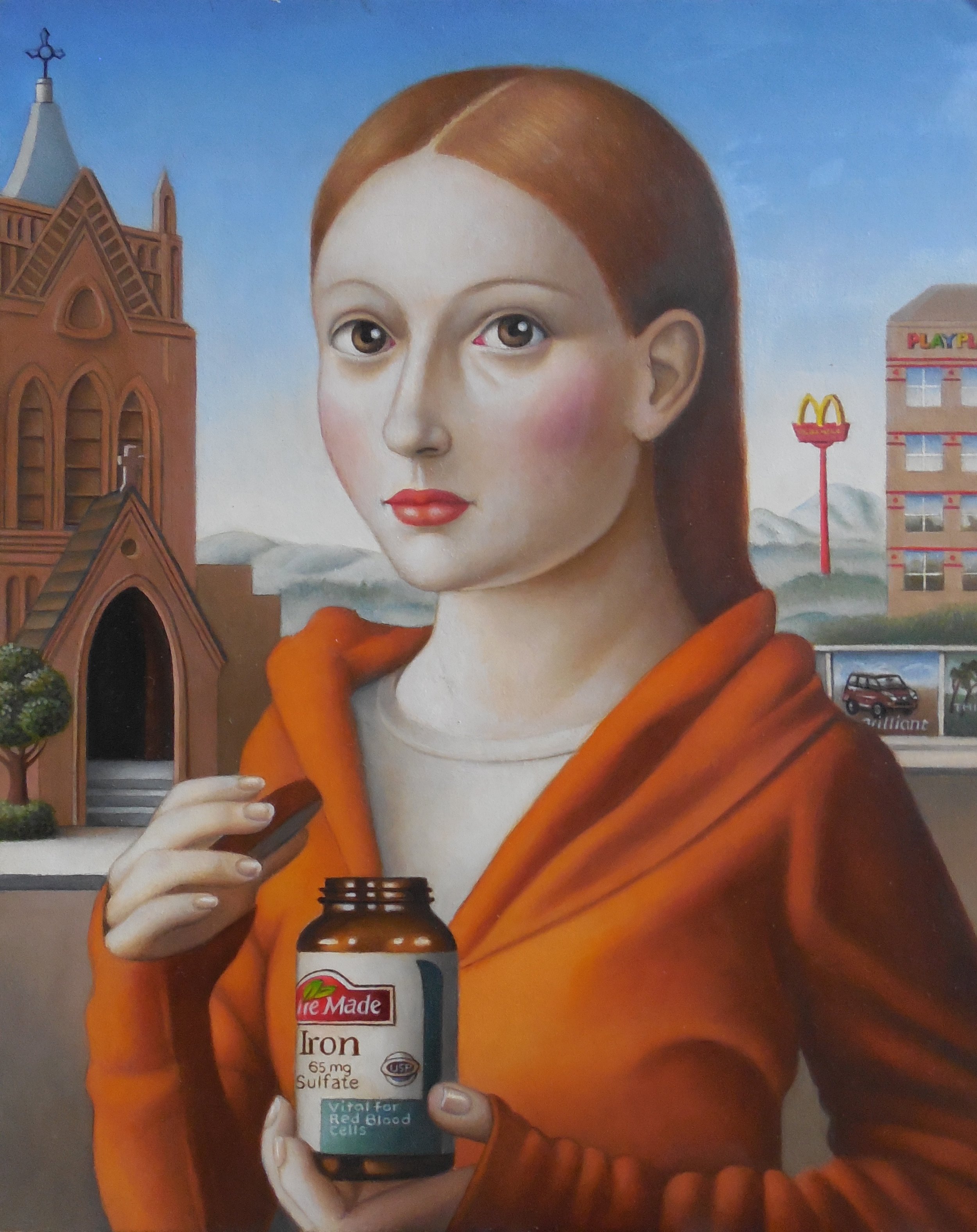
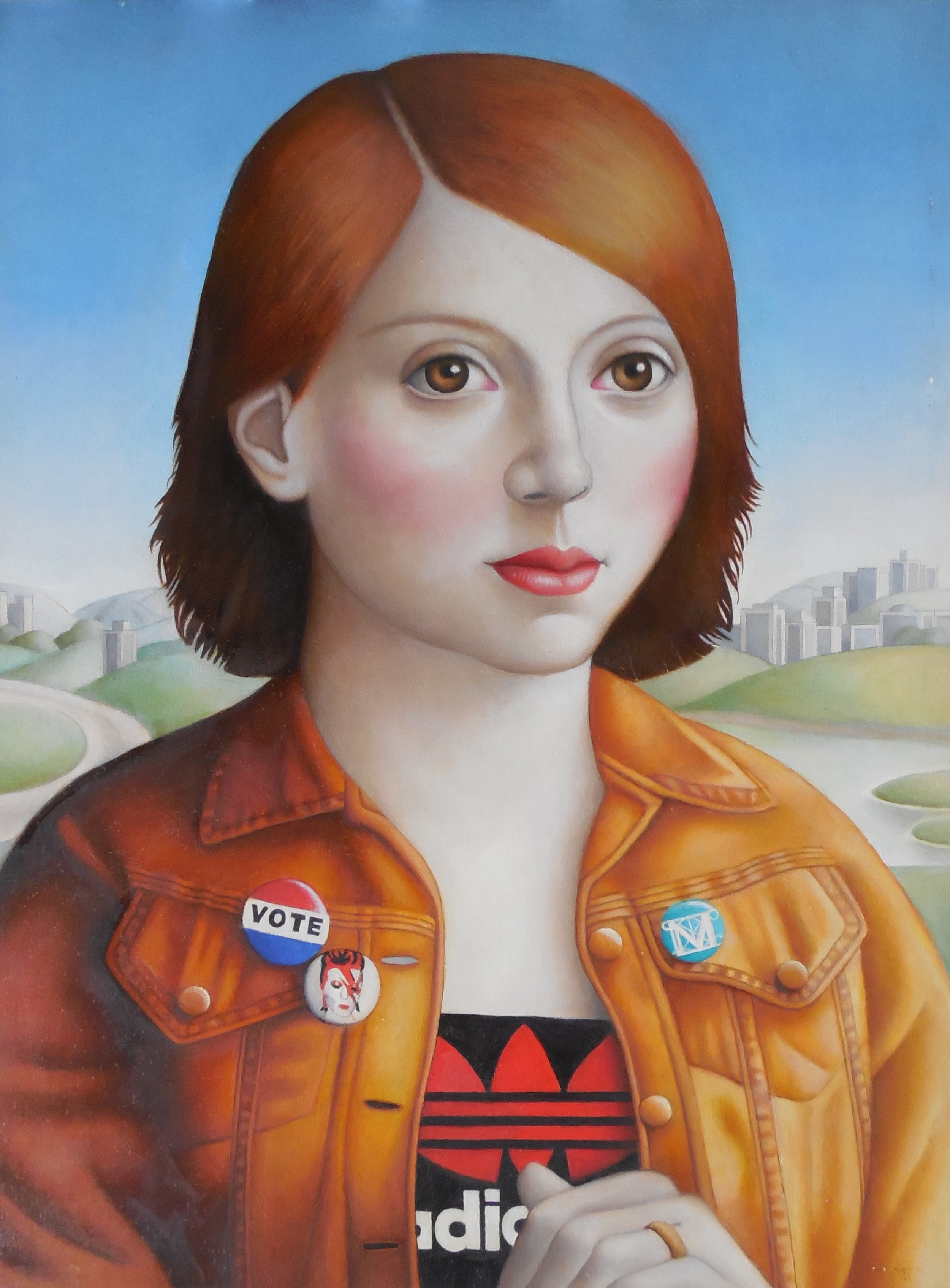
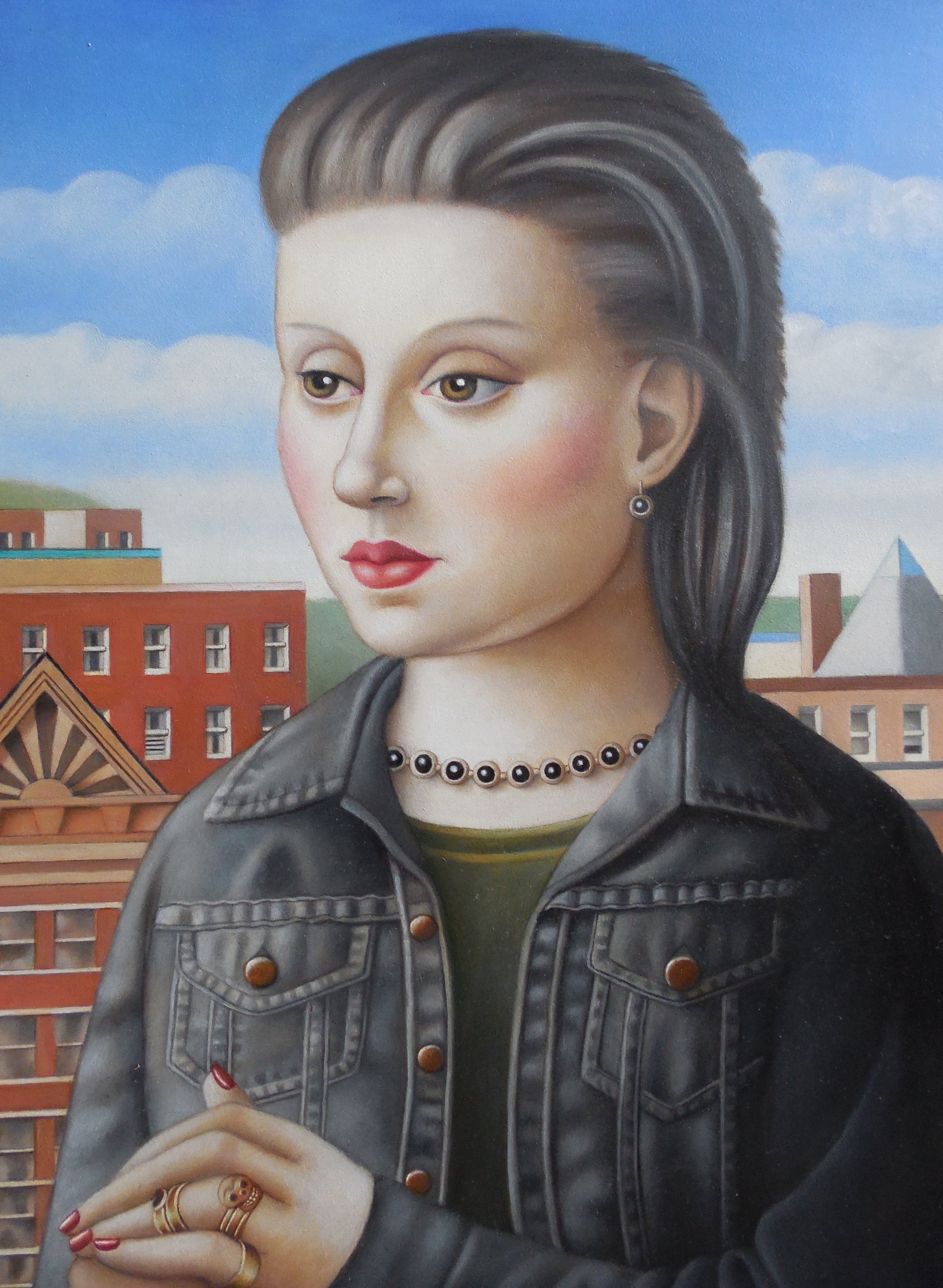
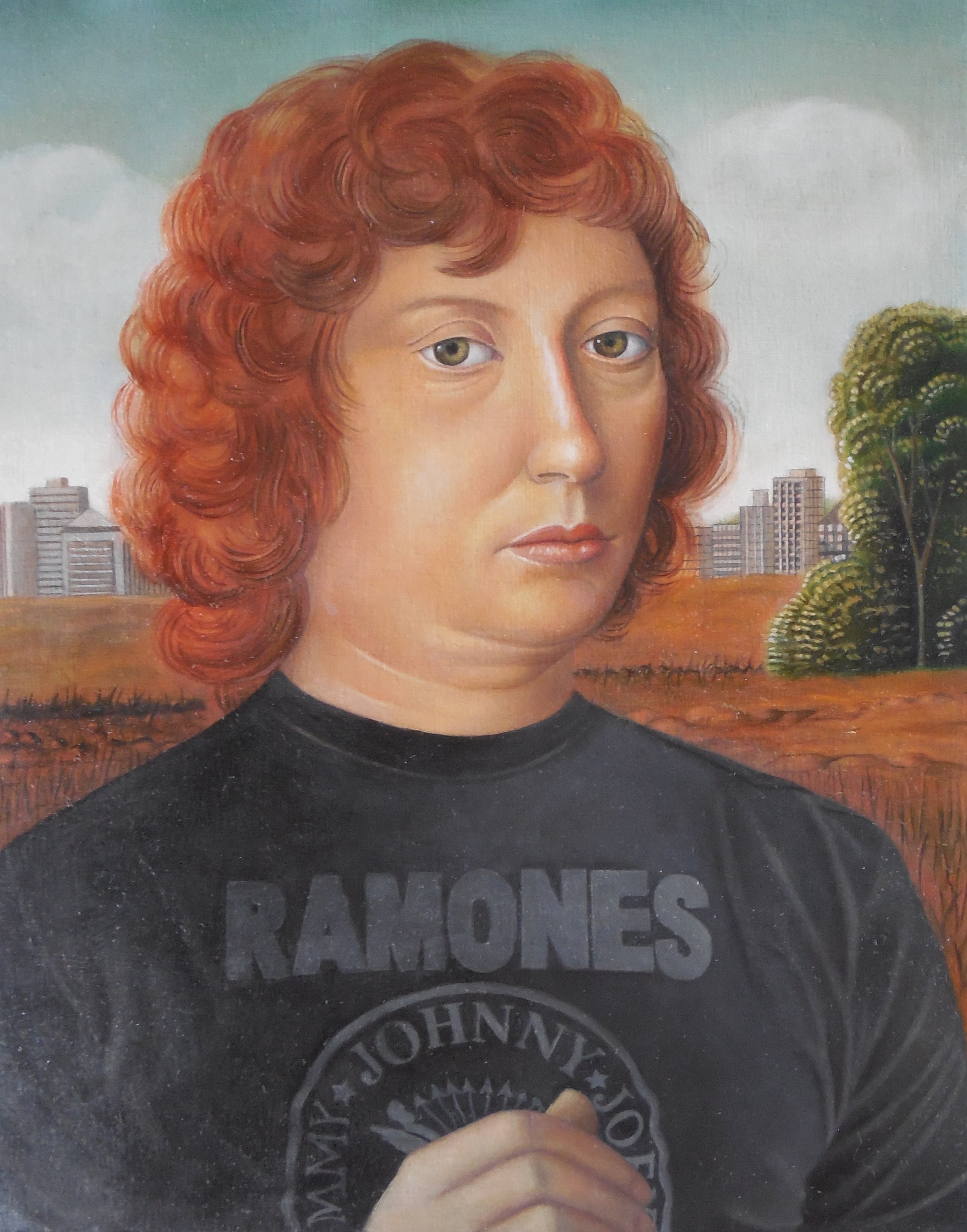
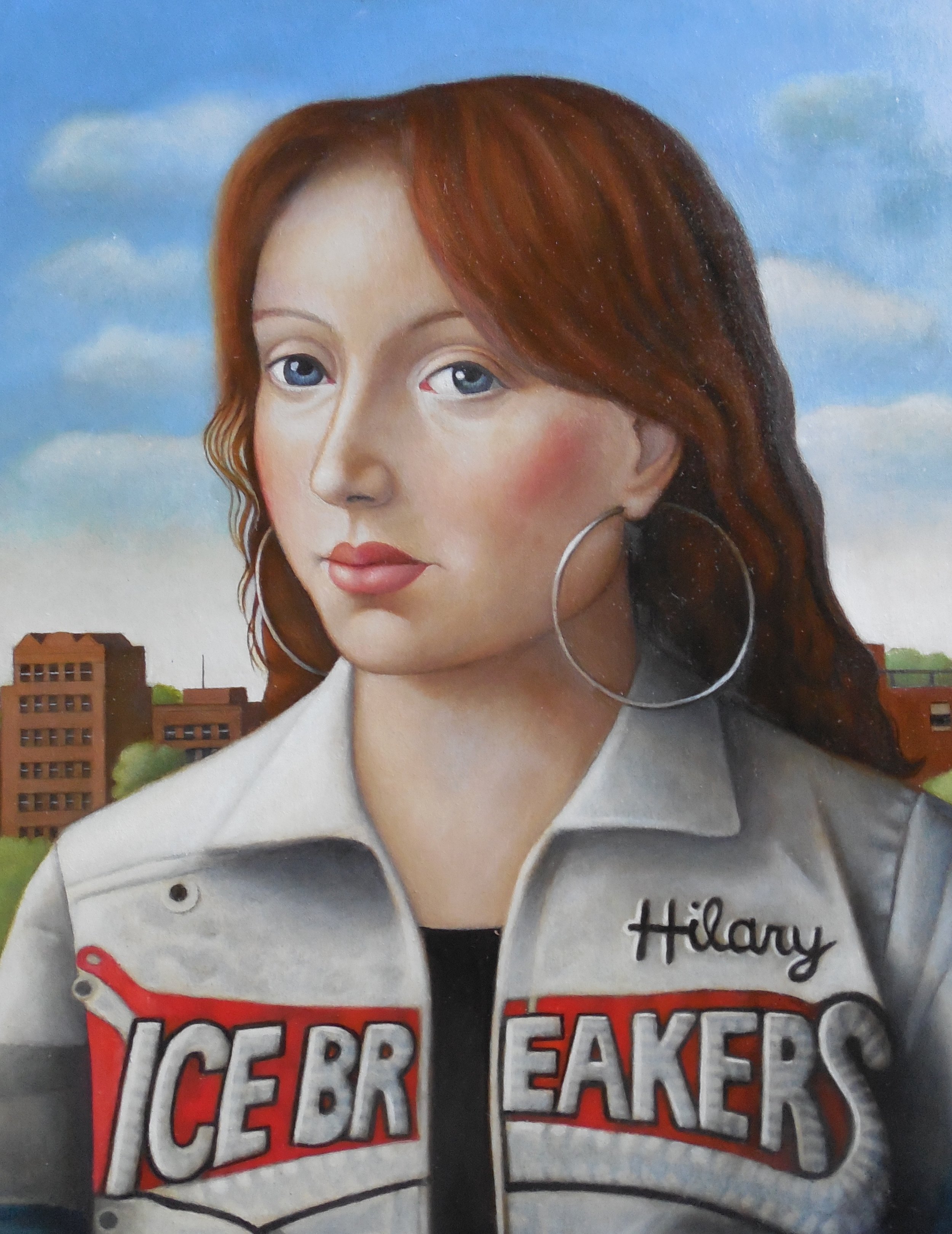
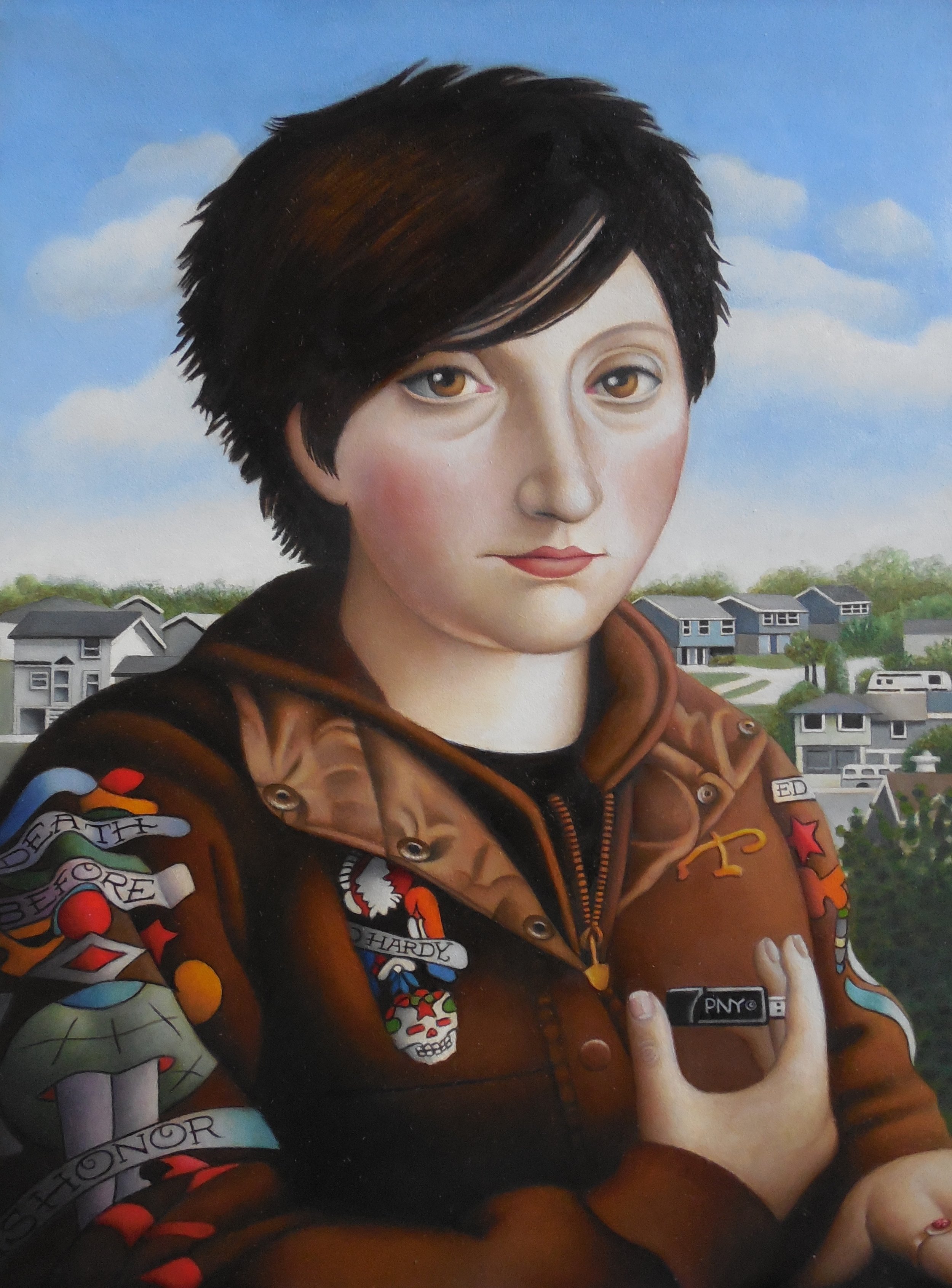


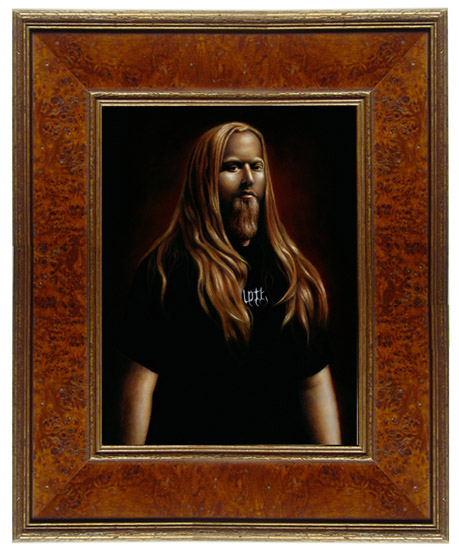
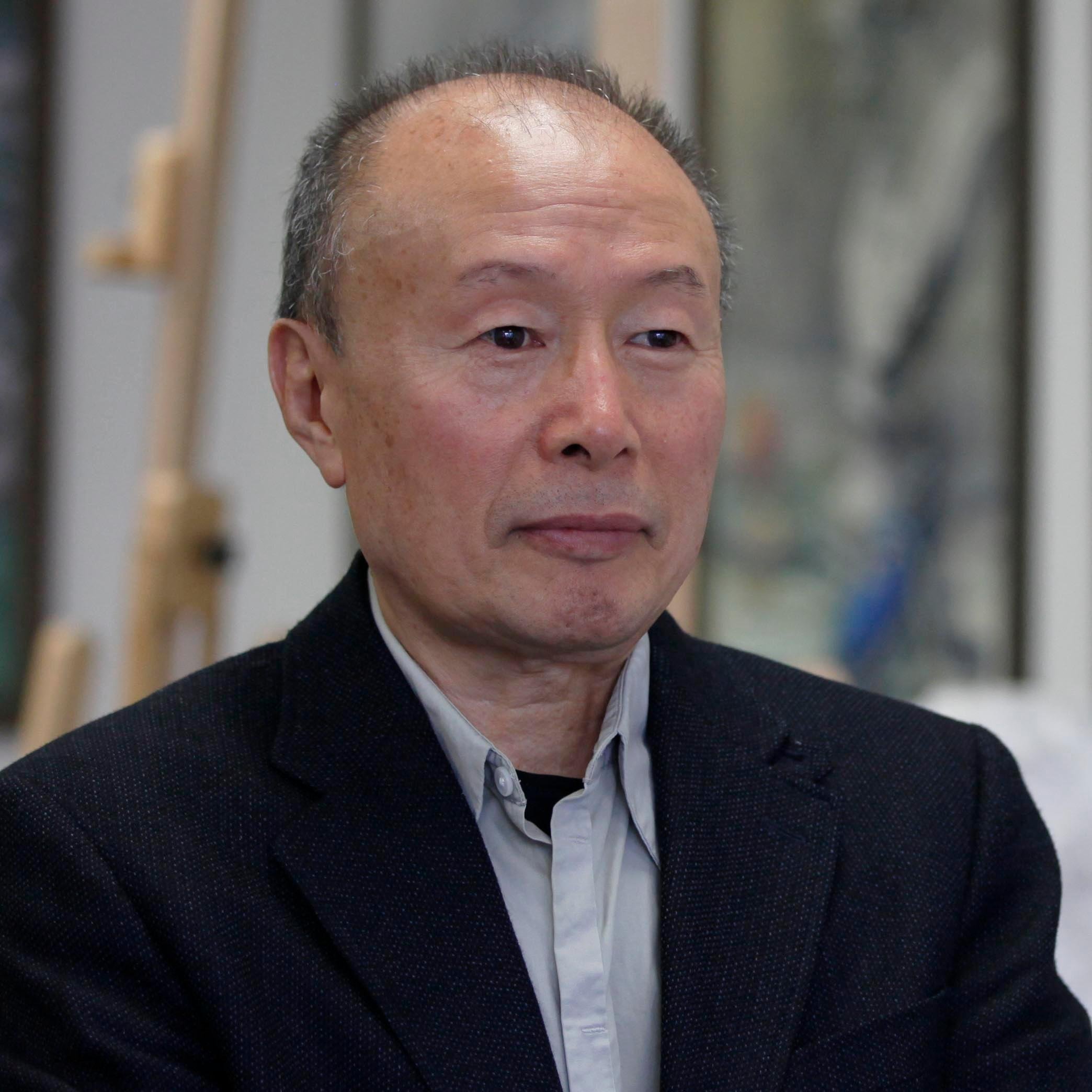 Phil Kho received his BA in visual communication at Hong Ik University in Seoul, Korea; his MFA in graphic design from California State University, Los Angeles; and his MS in visual communication at Pratt School of Art and Design in New York. He spent eight years as a professor of design in the fine arts department at the University of Suwon in Seoul. Kho has been an urban designer for over 20 years and an artist for over 50 years. He has written 10 books and dozens of articles on urban design. He currently resides and works in Koreatown.
Phil Kho received his BA in visual communication at Hong Ik University in Seoul, Korea; his MFA in graphic design from California State University, Los Angeles; and his MS in visual communication at Pratt School of Art and Design in New York. He spent eight years as a professor of design in the fine arts department at the University of Suwon in Seoul. Kho has been an urban designer for over 20 years and an artist for over 50 years. He has written 10 books and dozens of articles on urban design. He currently resides and works in Koreatown.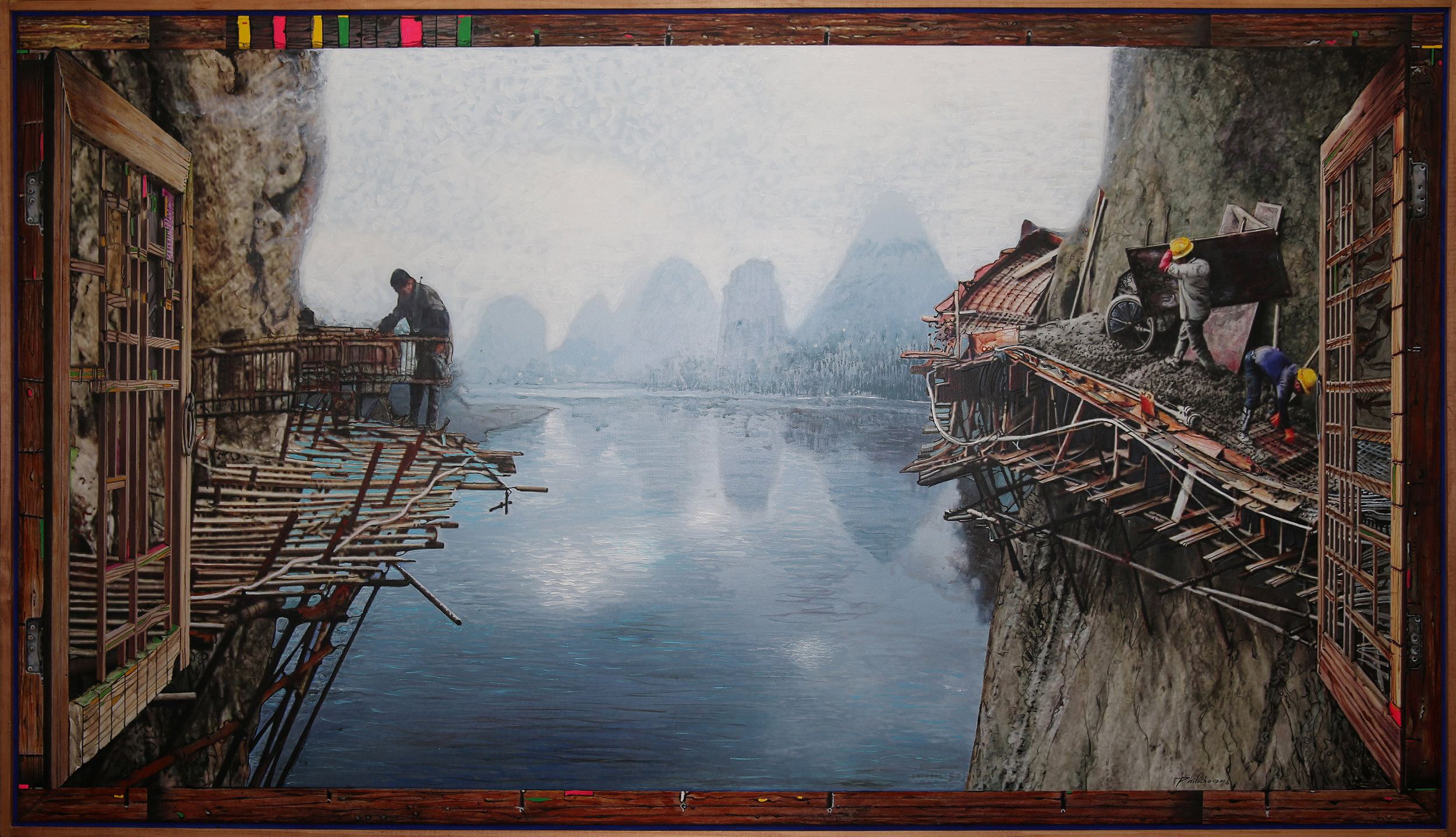
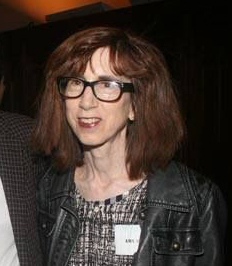

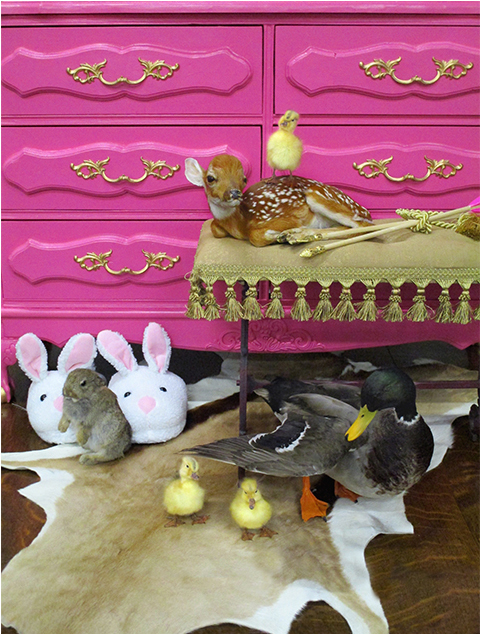

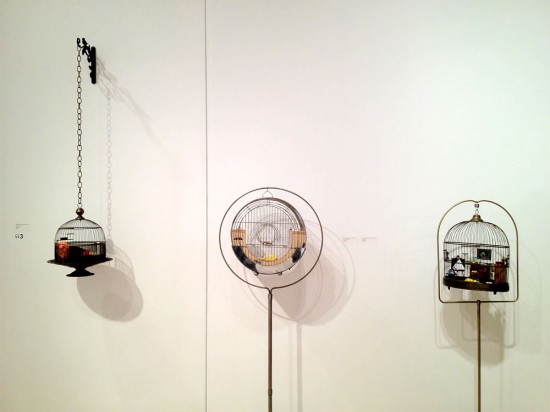 Catherine Coan was a huge hit at the 2016 L.A. Art Show in downtown Los Angeles -making it into many popular best of lists. A few years before she had made a huge splash as an Official Selection at the 2011 South by Southwest film festival with a short "The Canary Suicides" featuring her artwork. In 2012, the Canary Suicides was on display at the Lois Lambert Gallery. We are thrilled to welcome her back after such an amazing run at the L.A. Art Show and excited to showcase her new work.
Catherine Coan was a huge hit at the 2016 L.A. Art Show in downtown Los Angeles -making it into many popular best of lists. A few years before she had made a huge splash as an Official Selection at the 2011 South by Southwest film festival with a short "The Canary Suicides" featuring her artwork. In 2012, the Canary Suicides was on display at the Lois Lambert Gallery. We are thrilled to welcome her back after such an amazing run at the L.A. Art Show and excited to showcase her new work.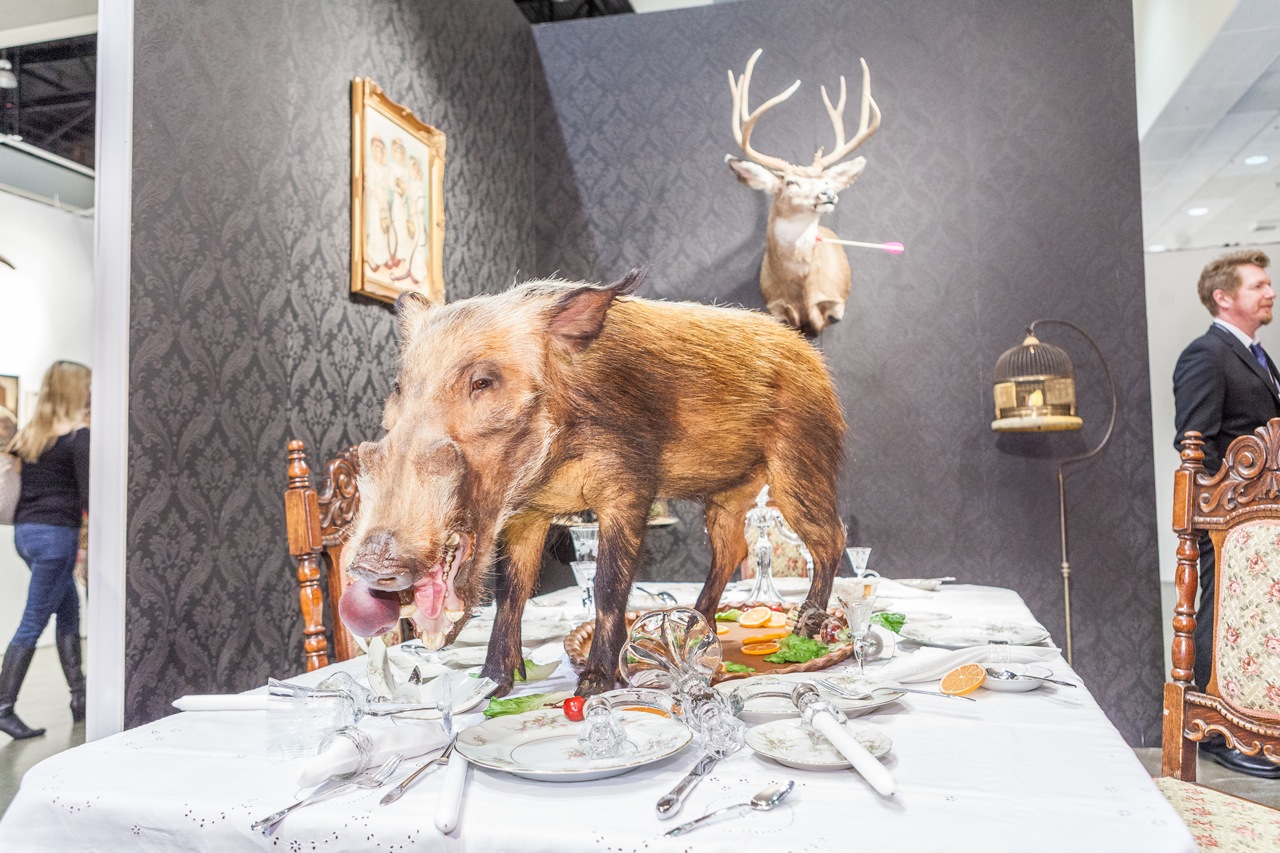
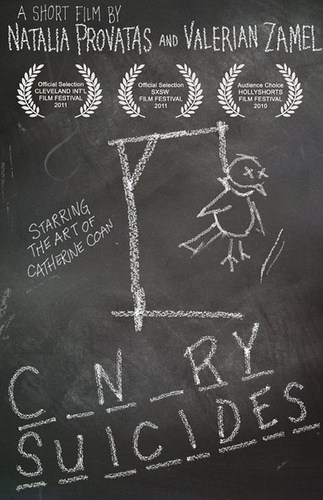
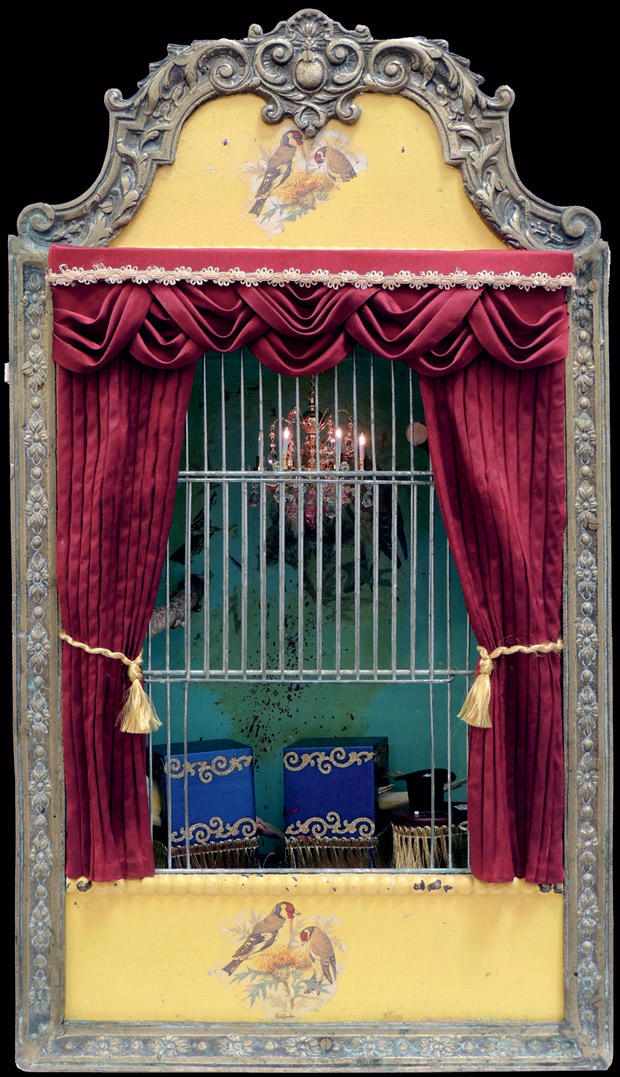
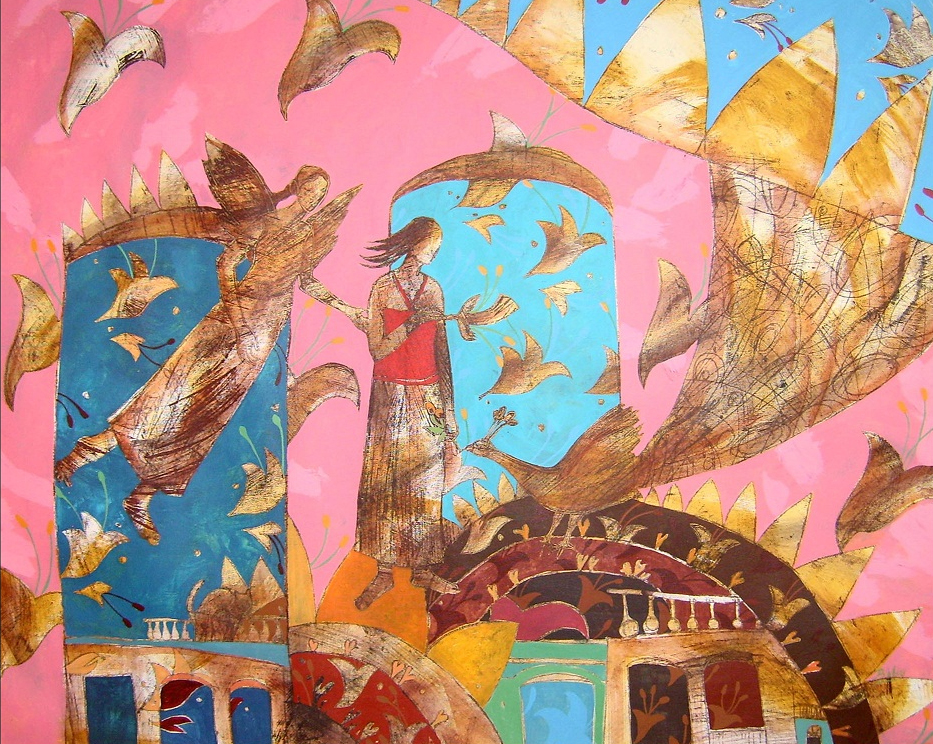 the avant-garde work produced in Havana
the avant-garde work produced in Havana